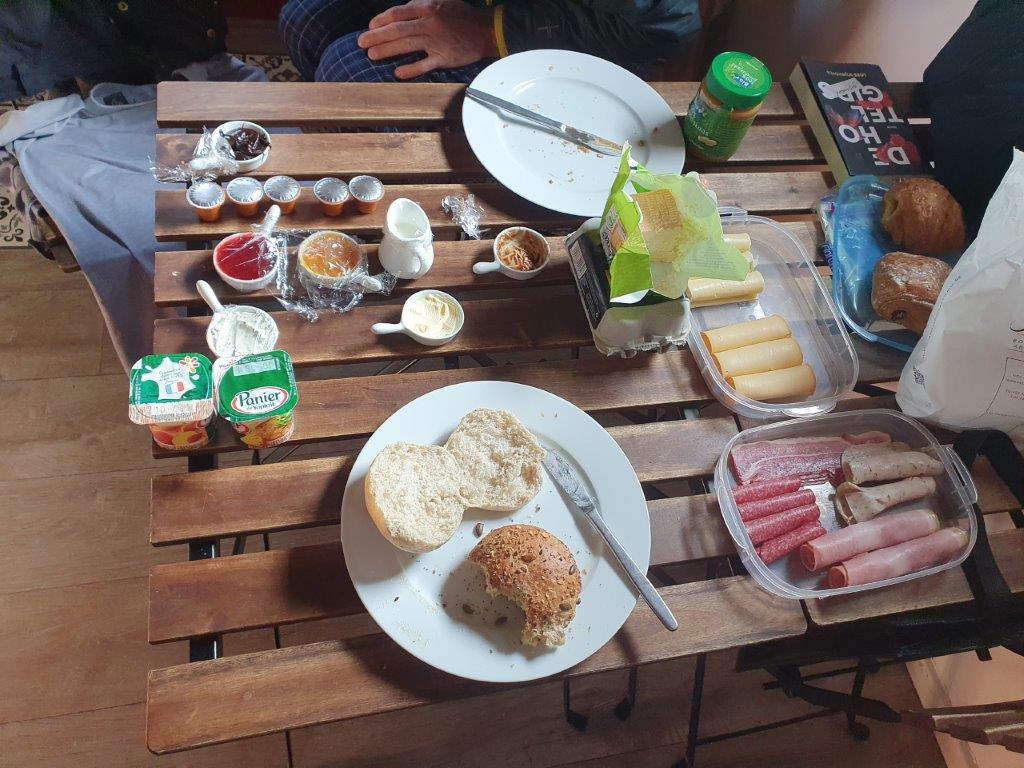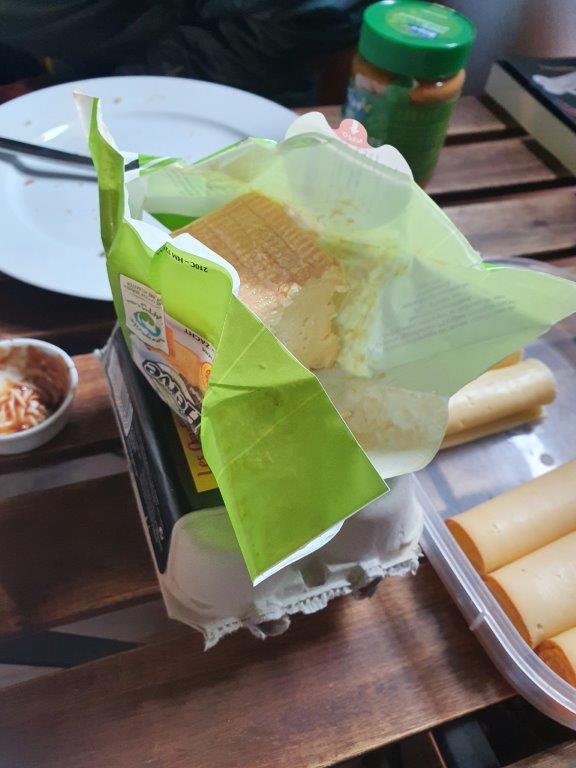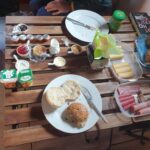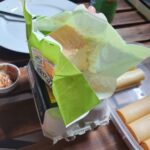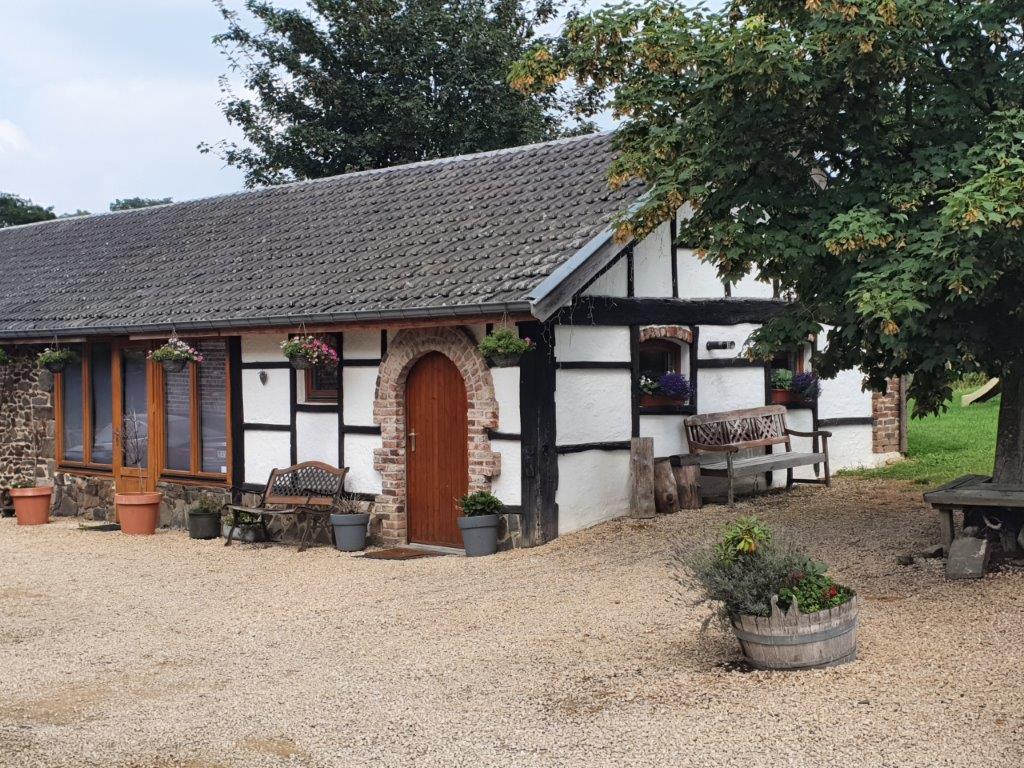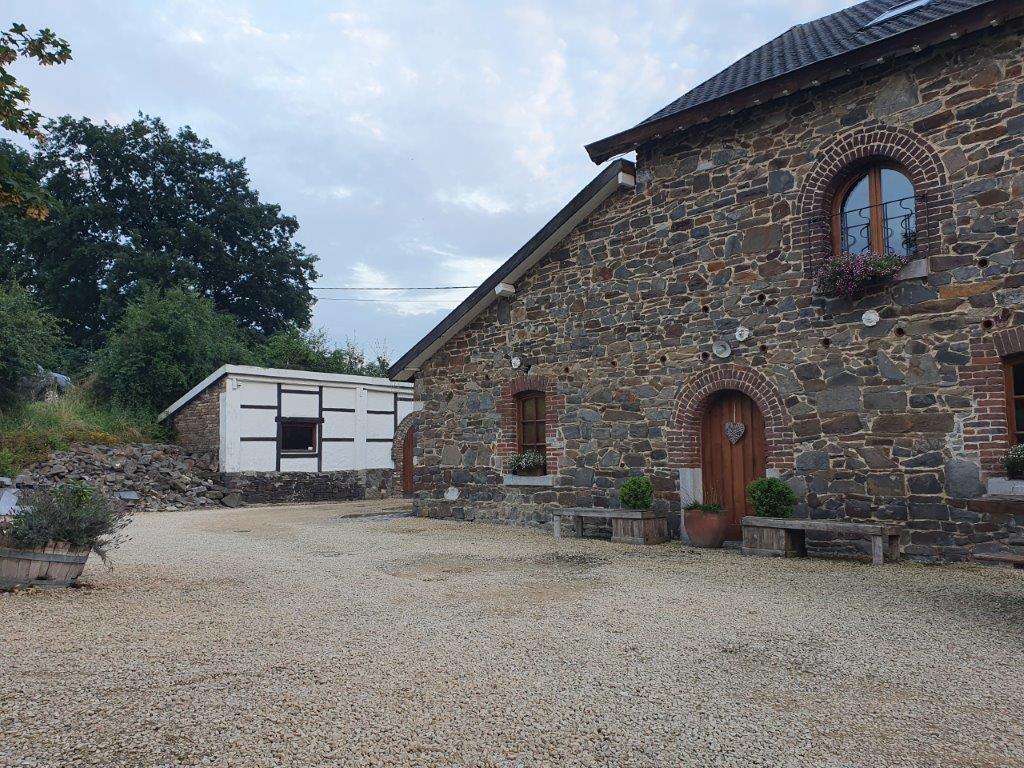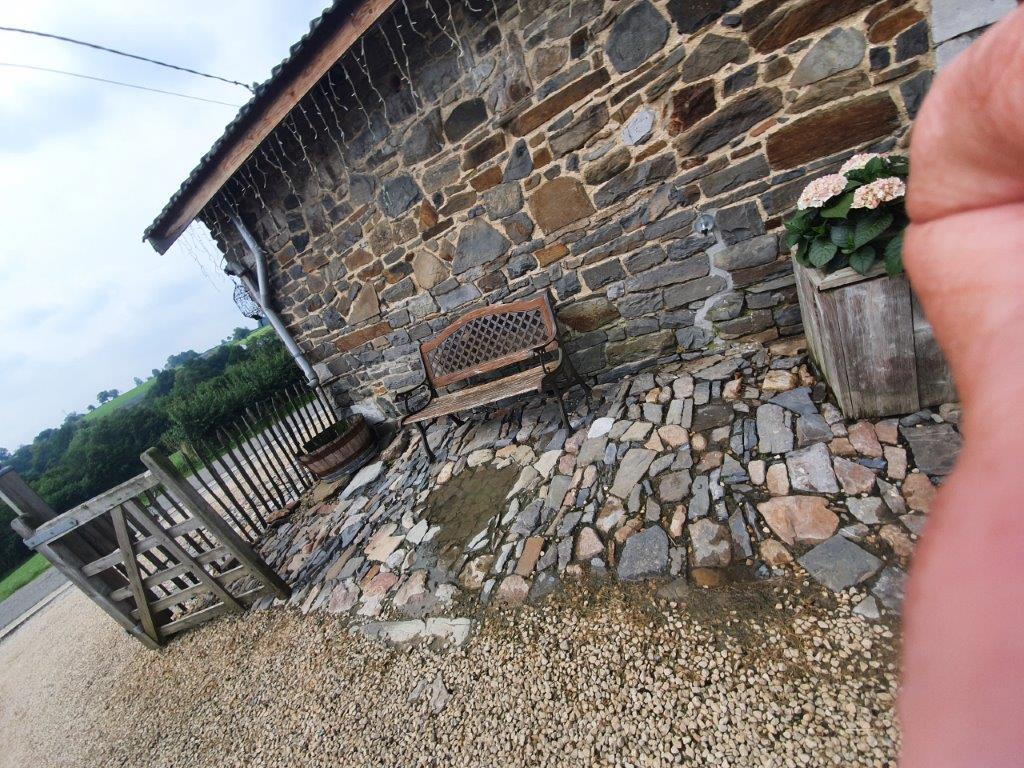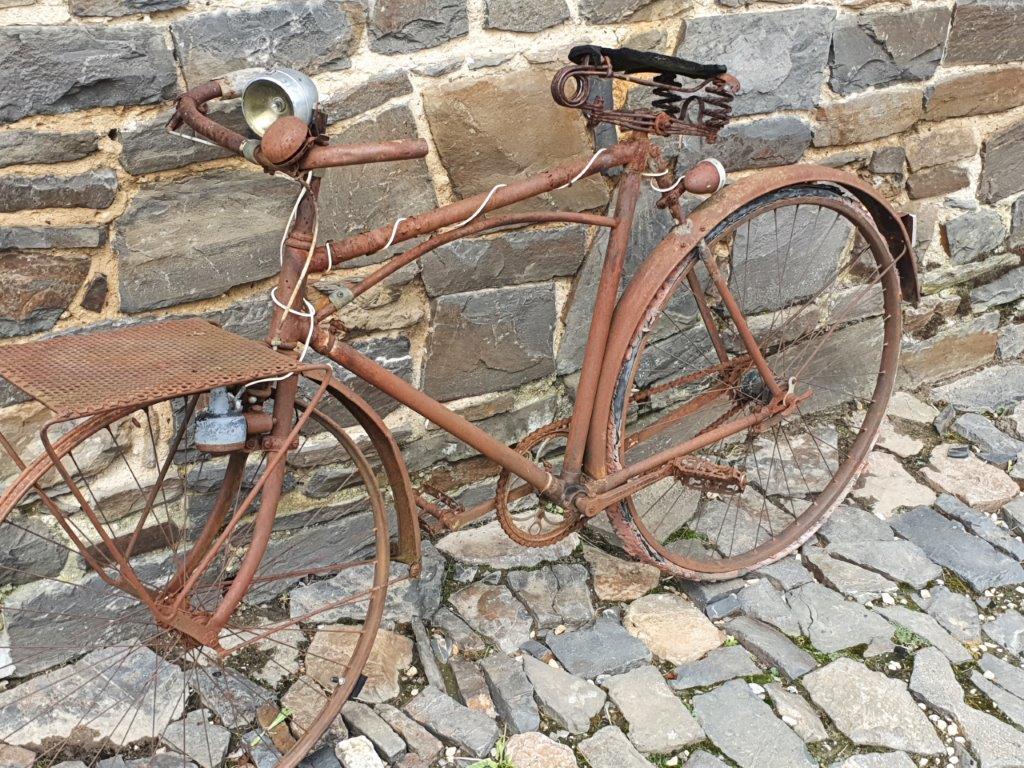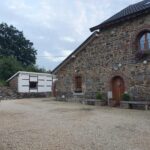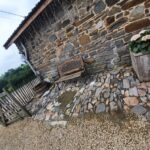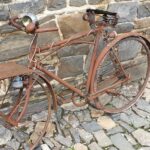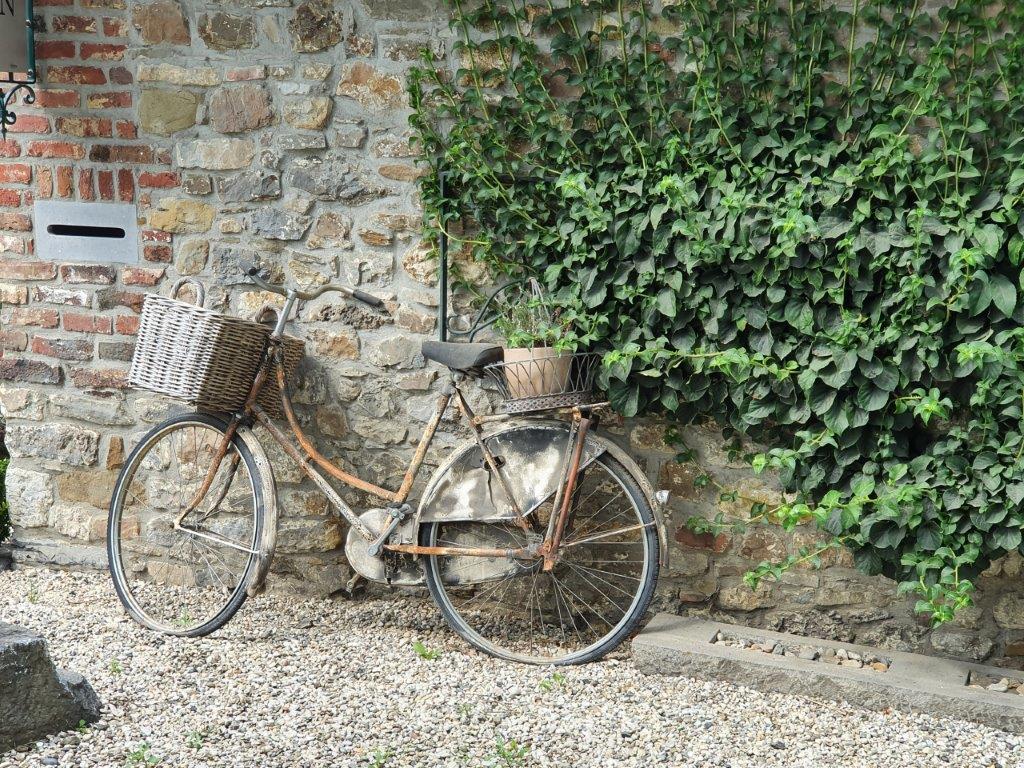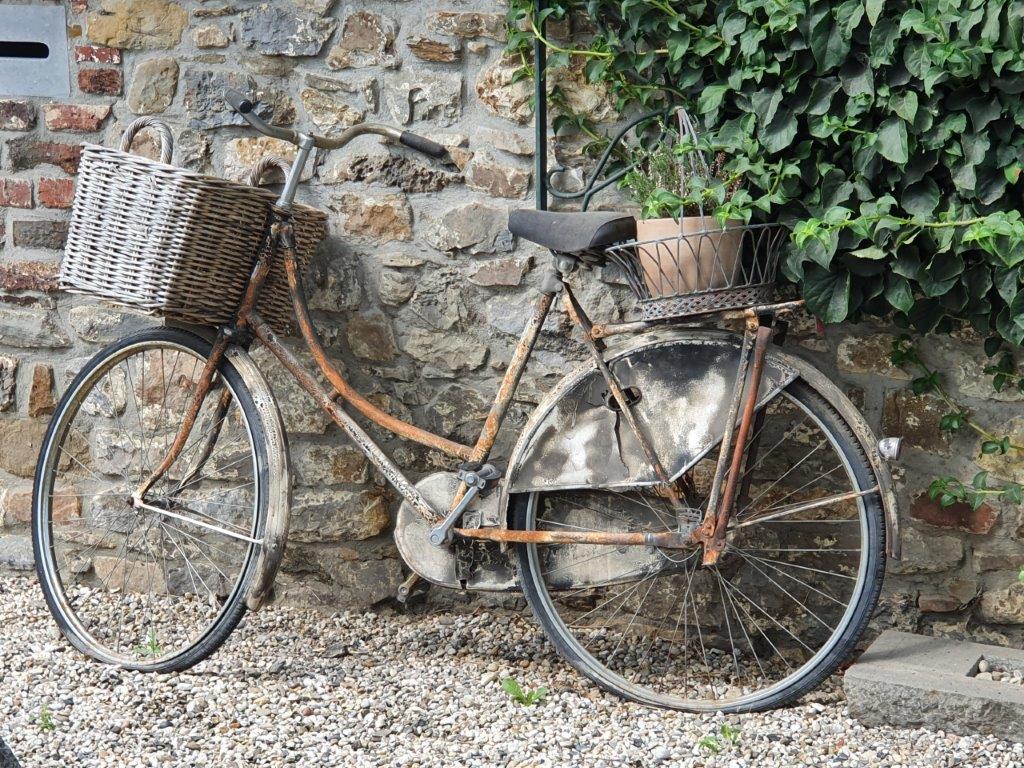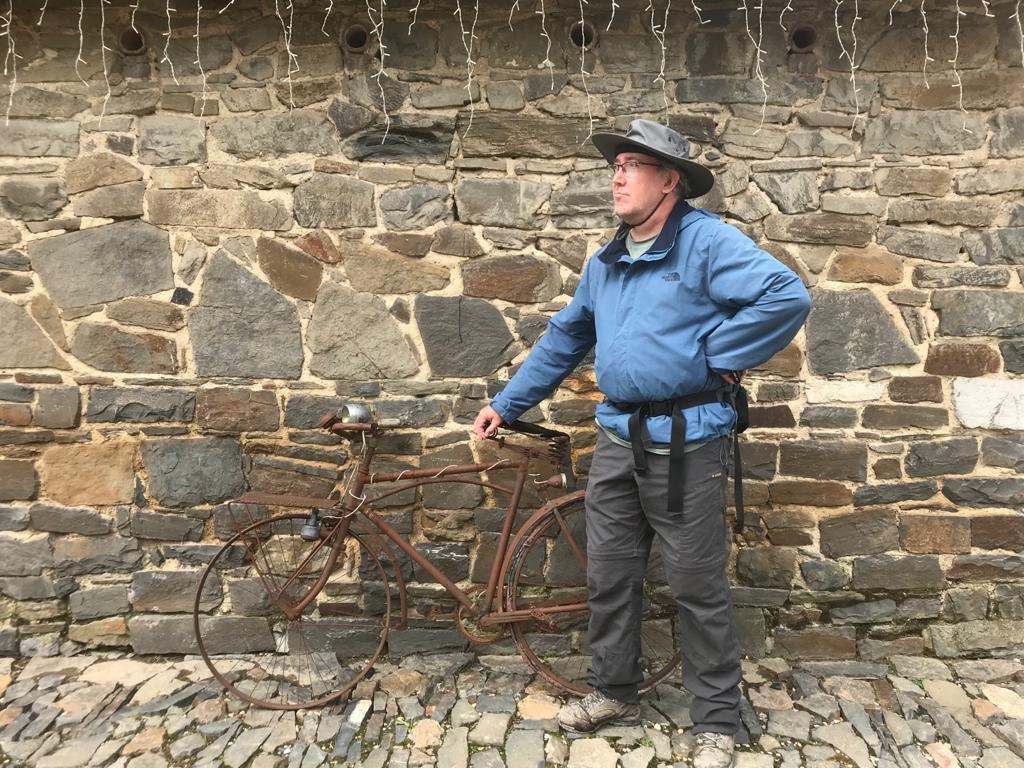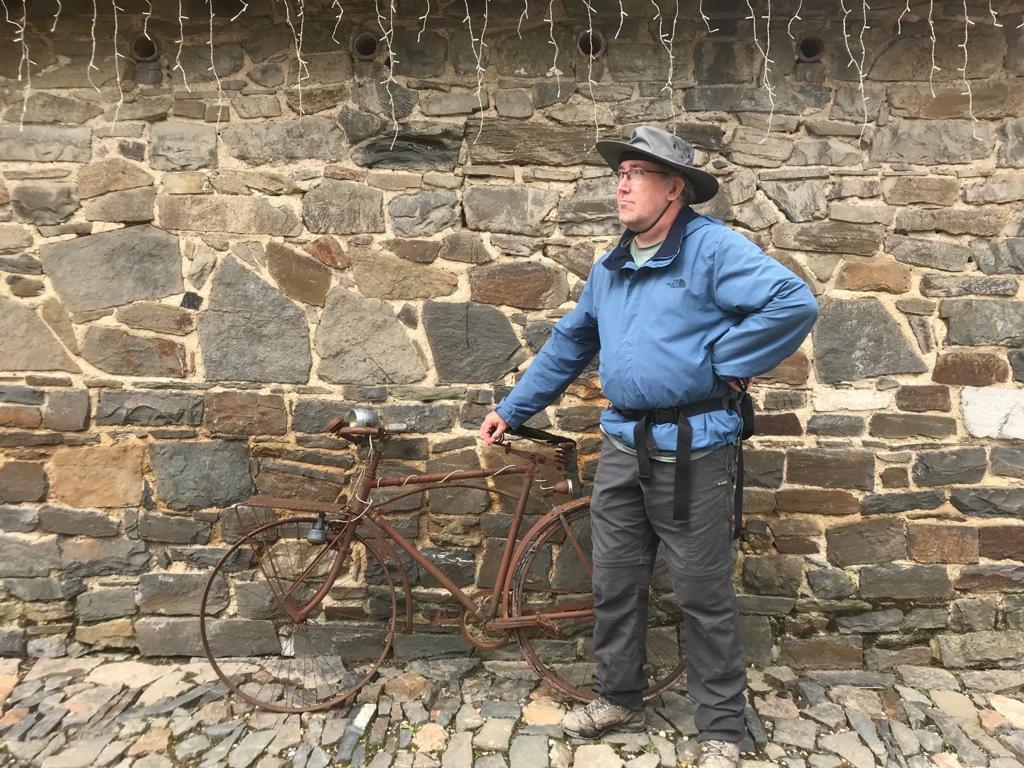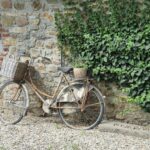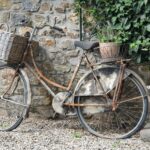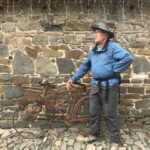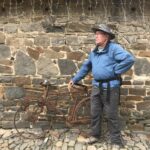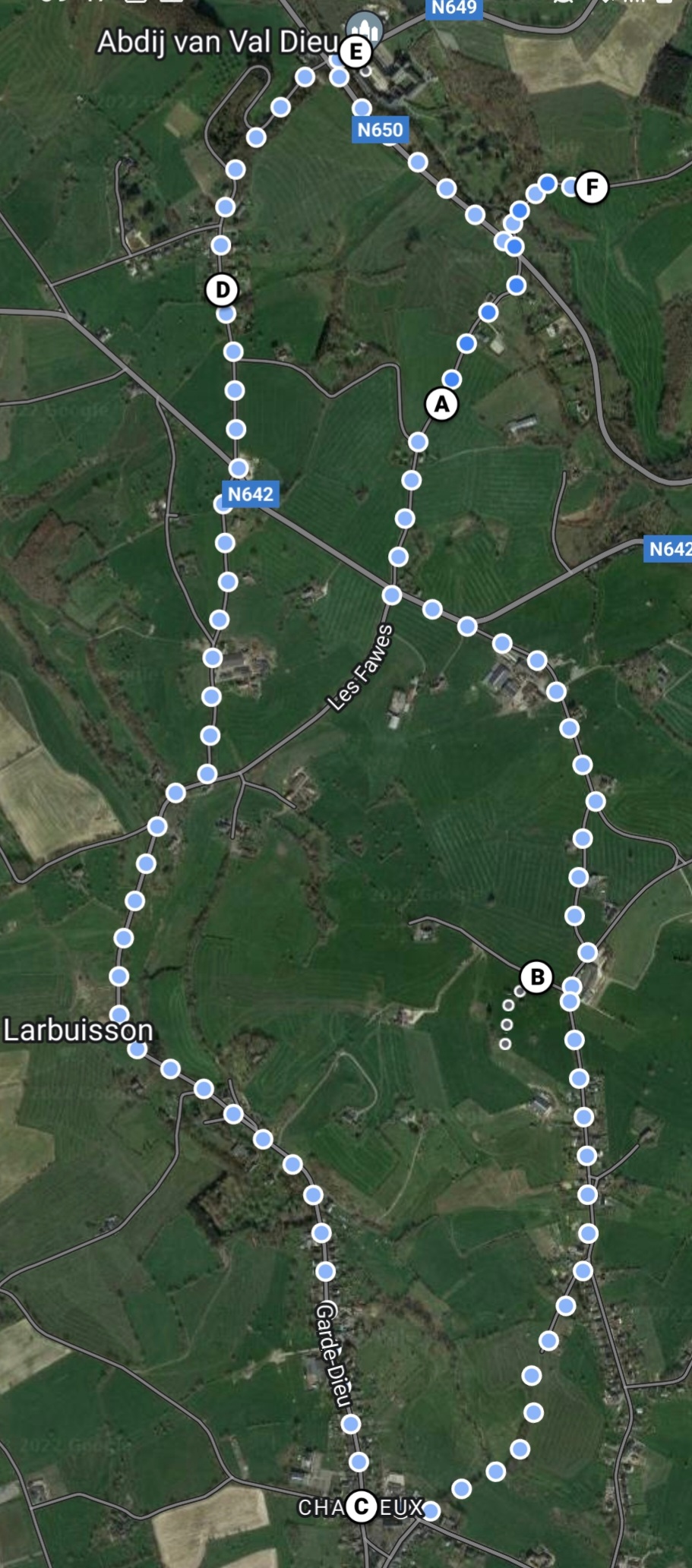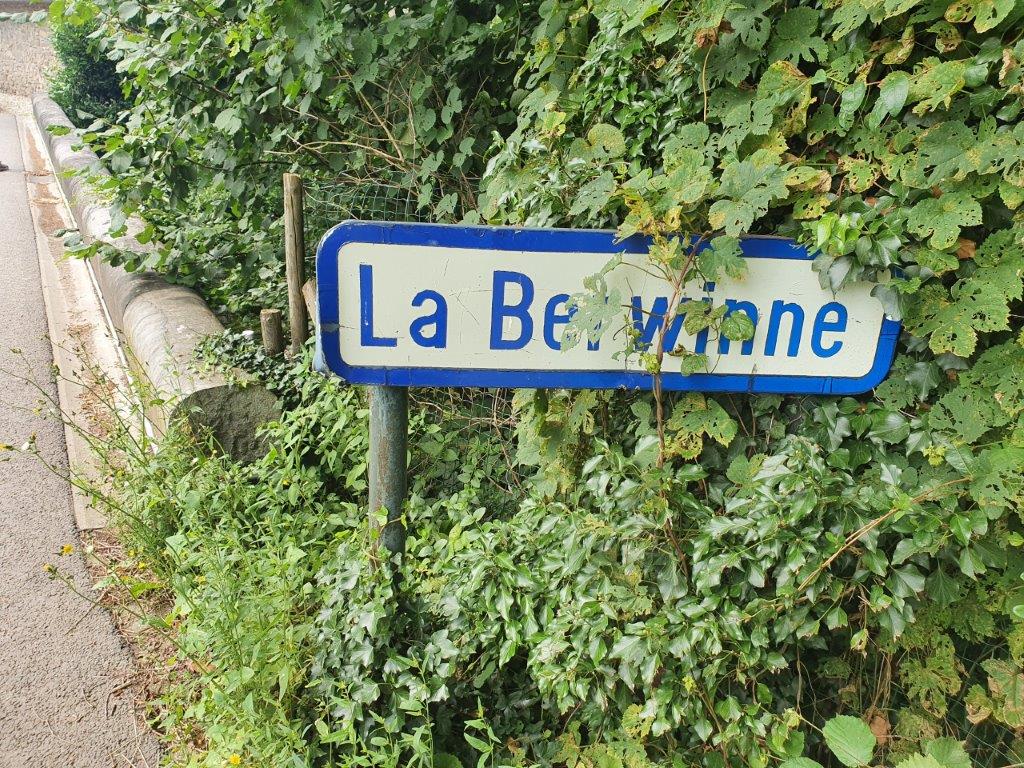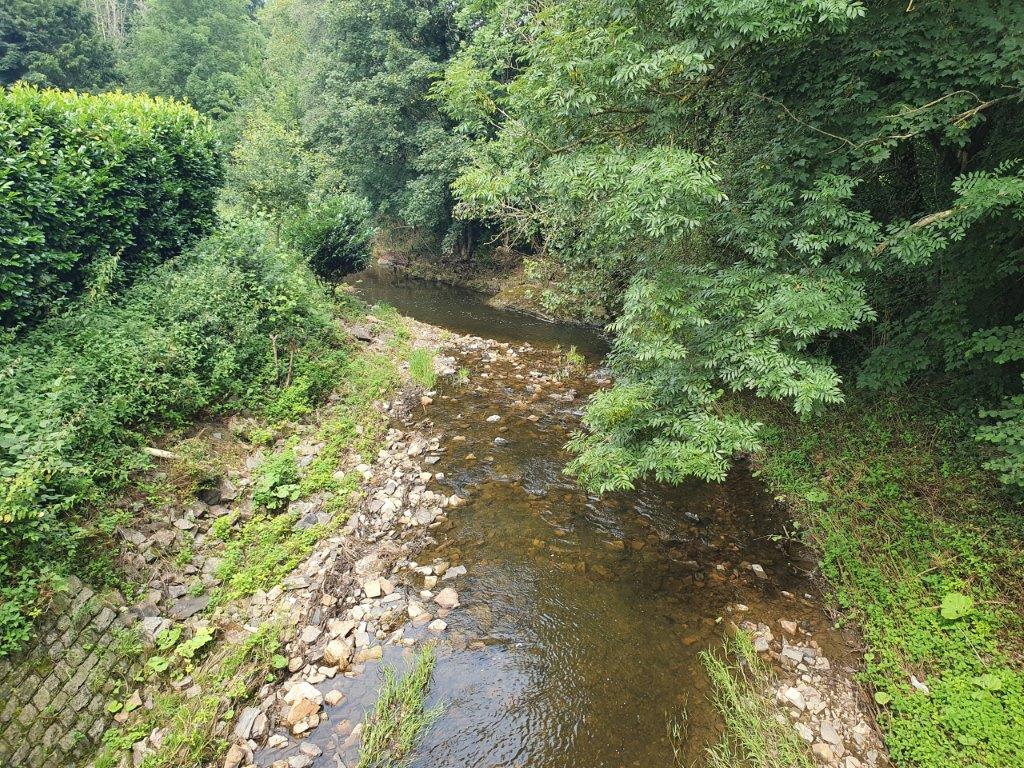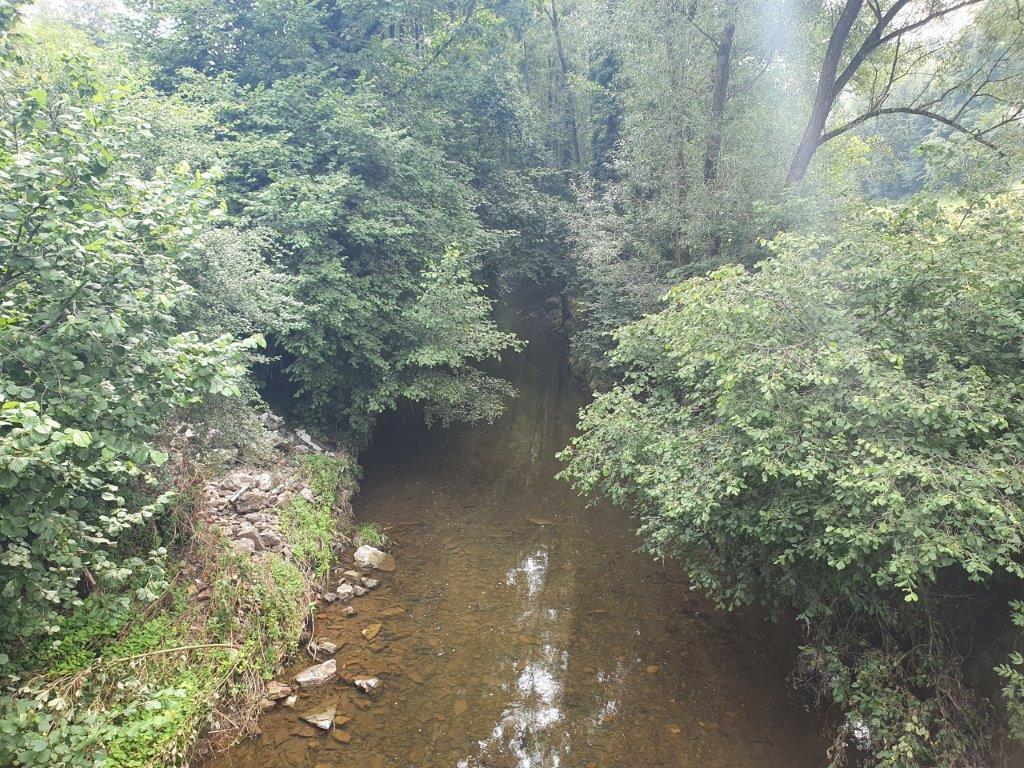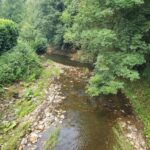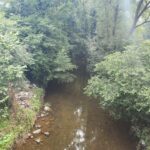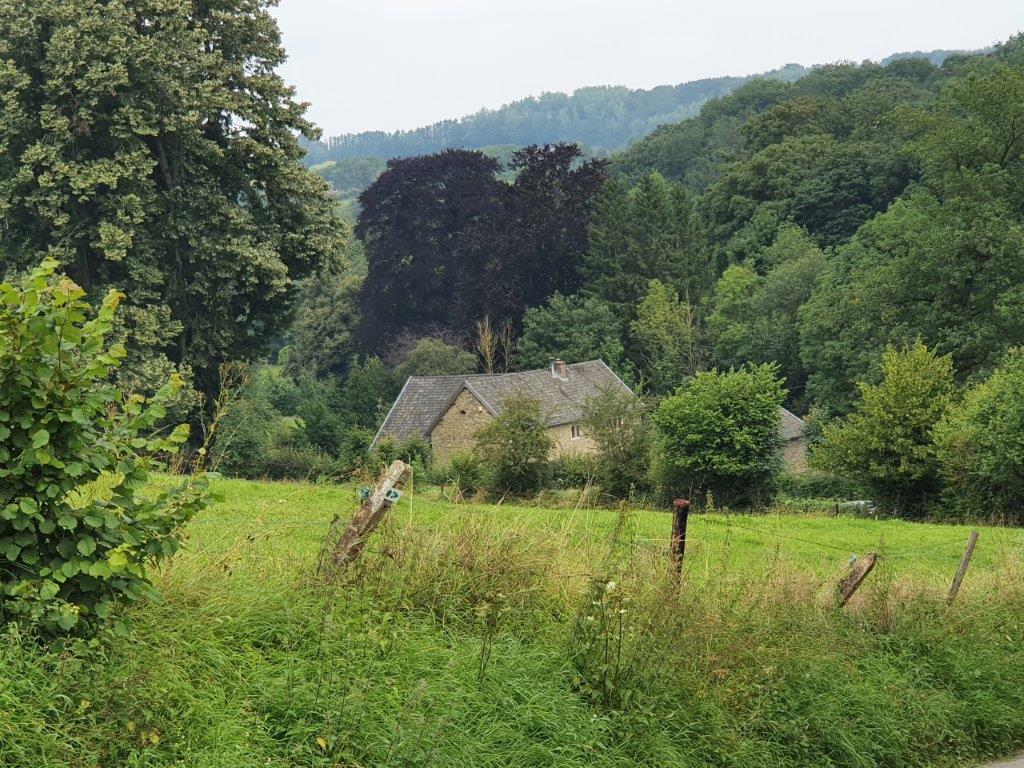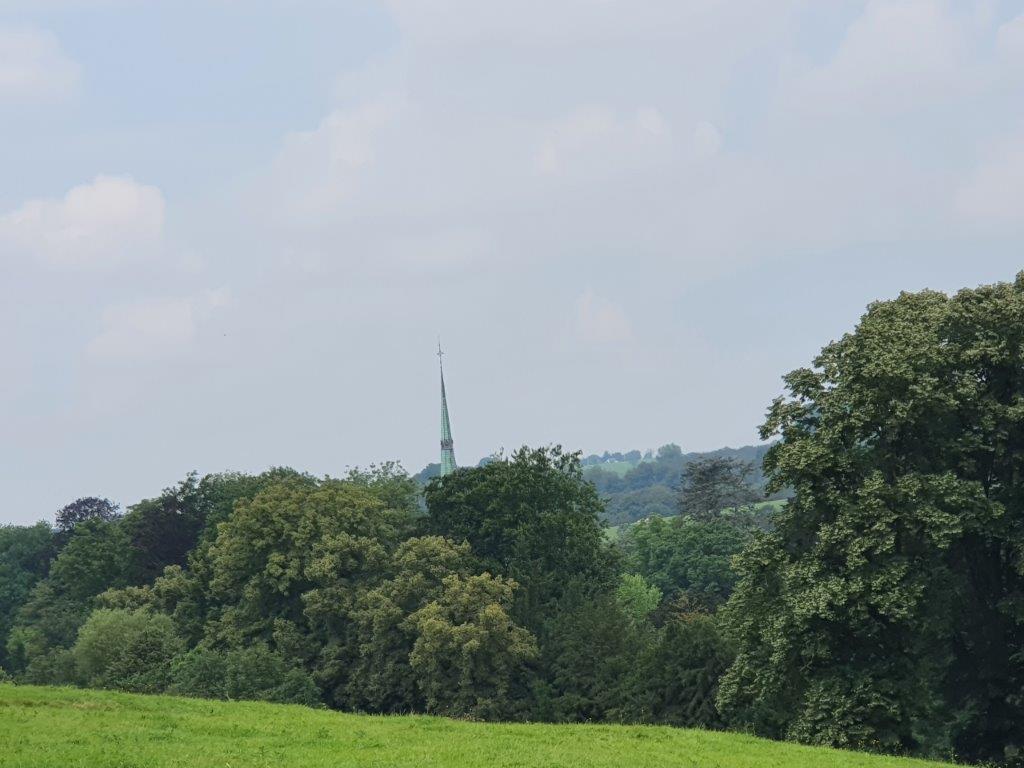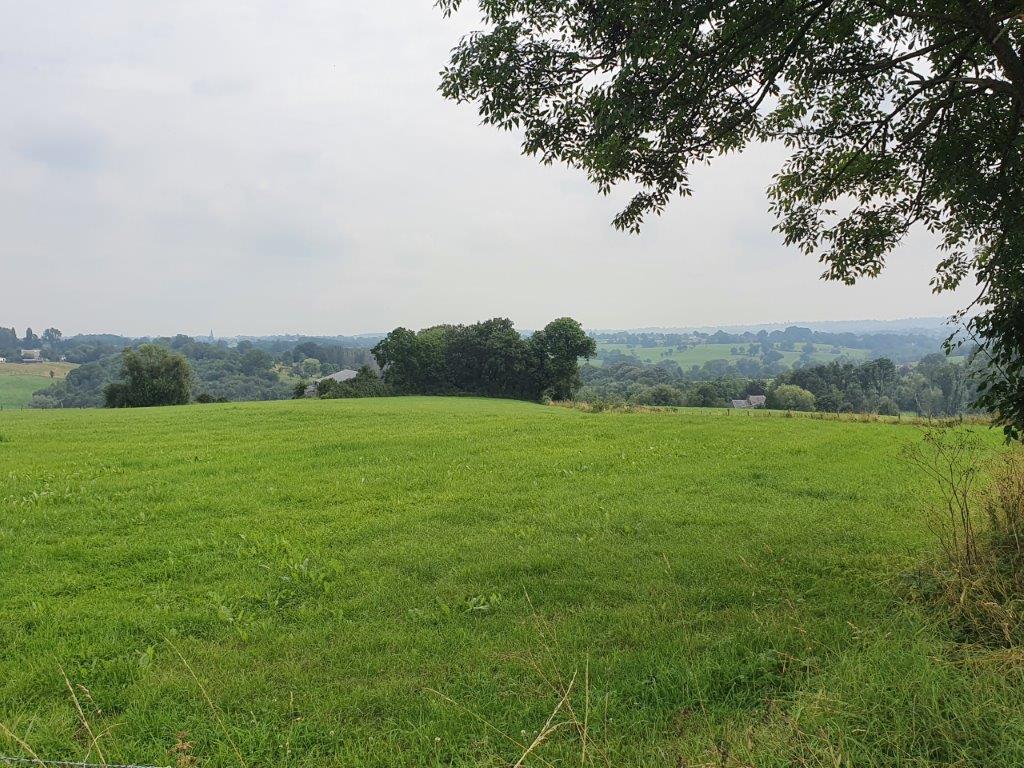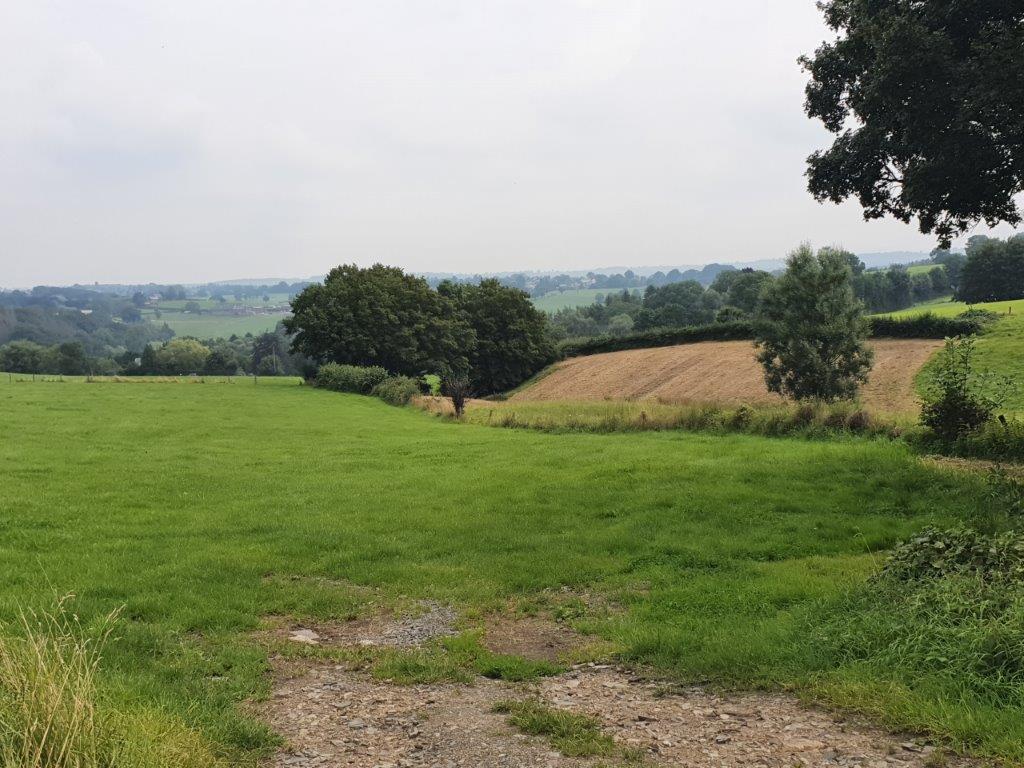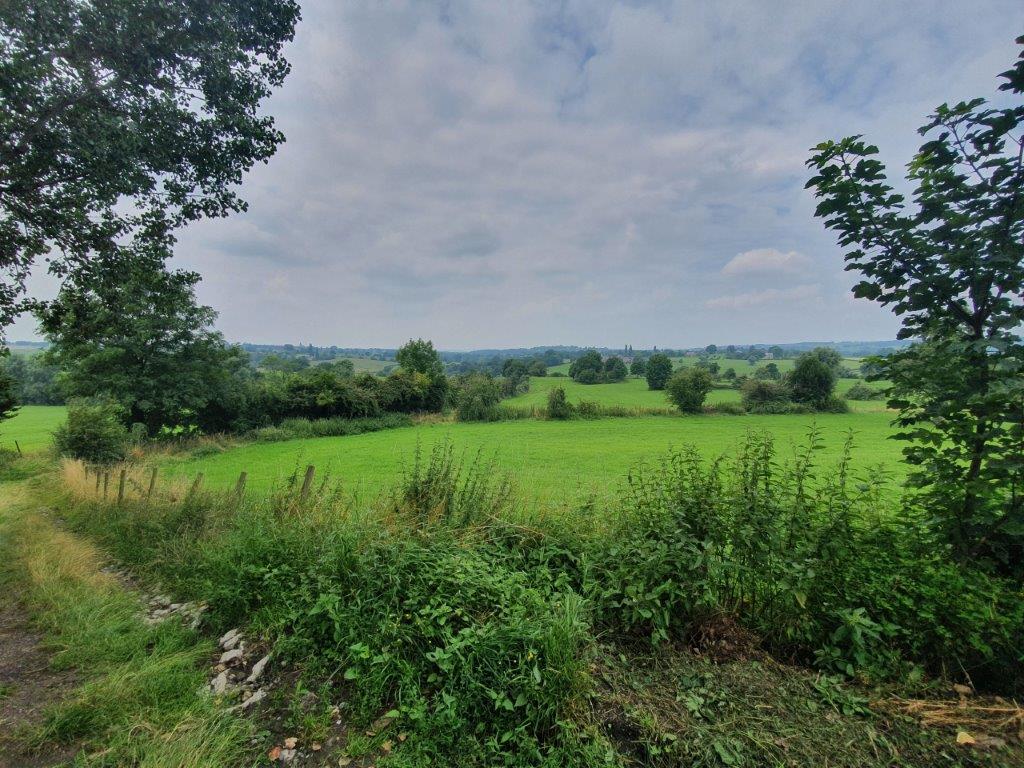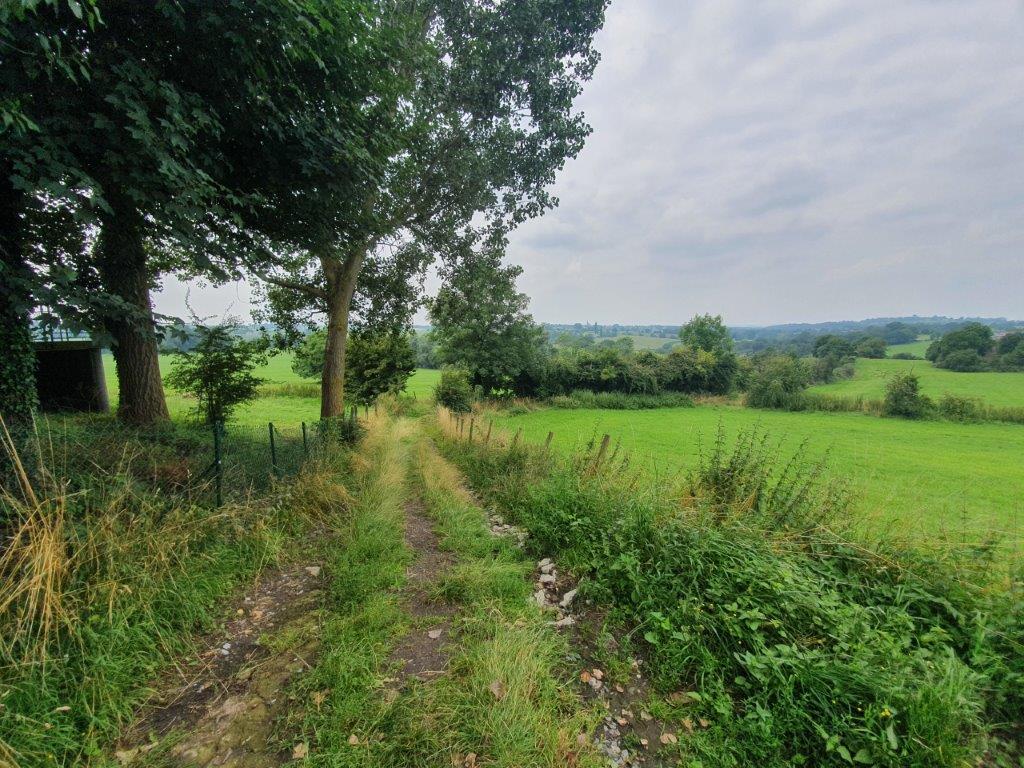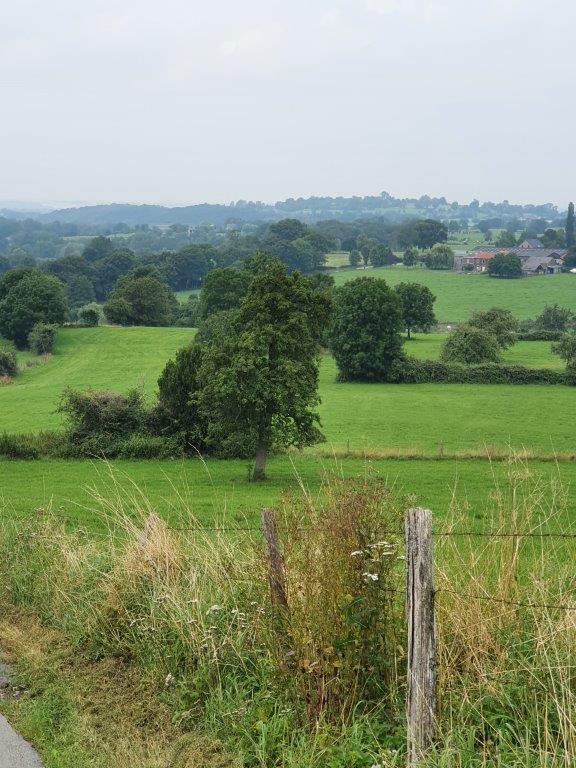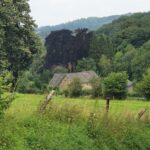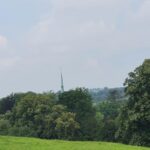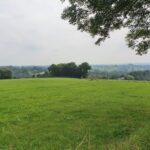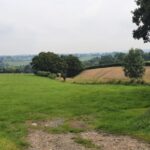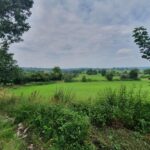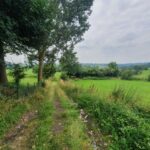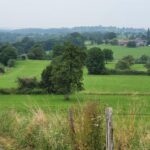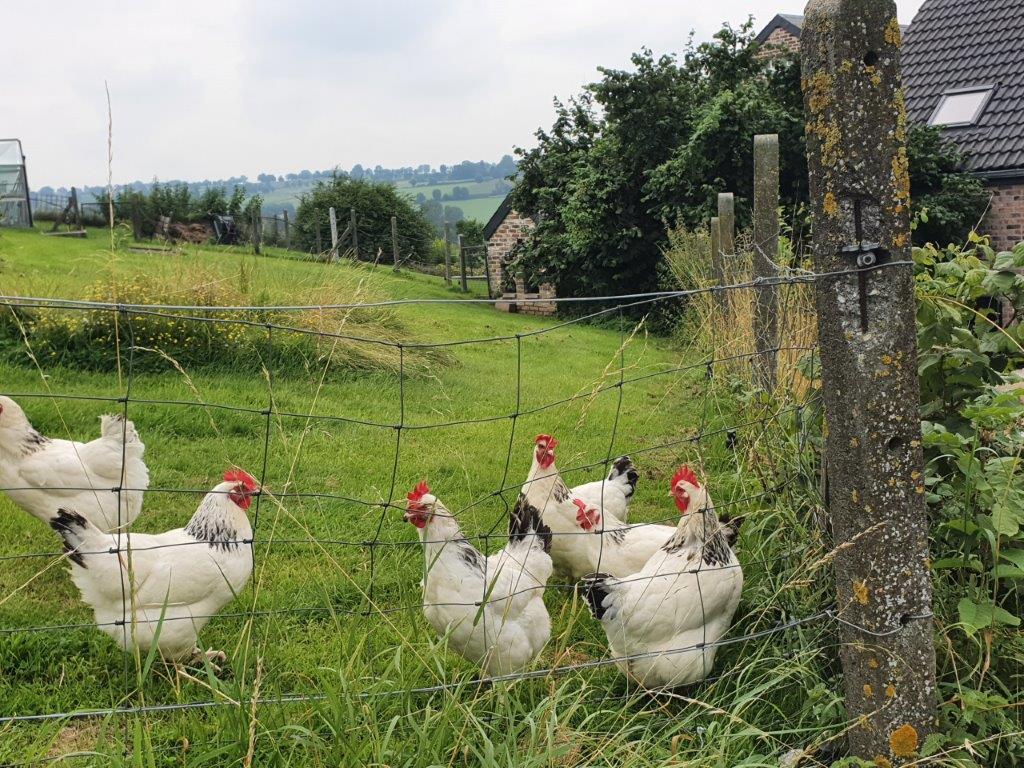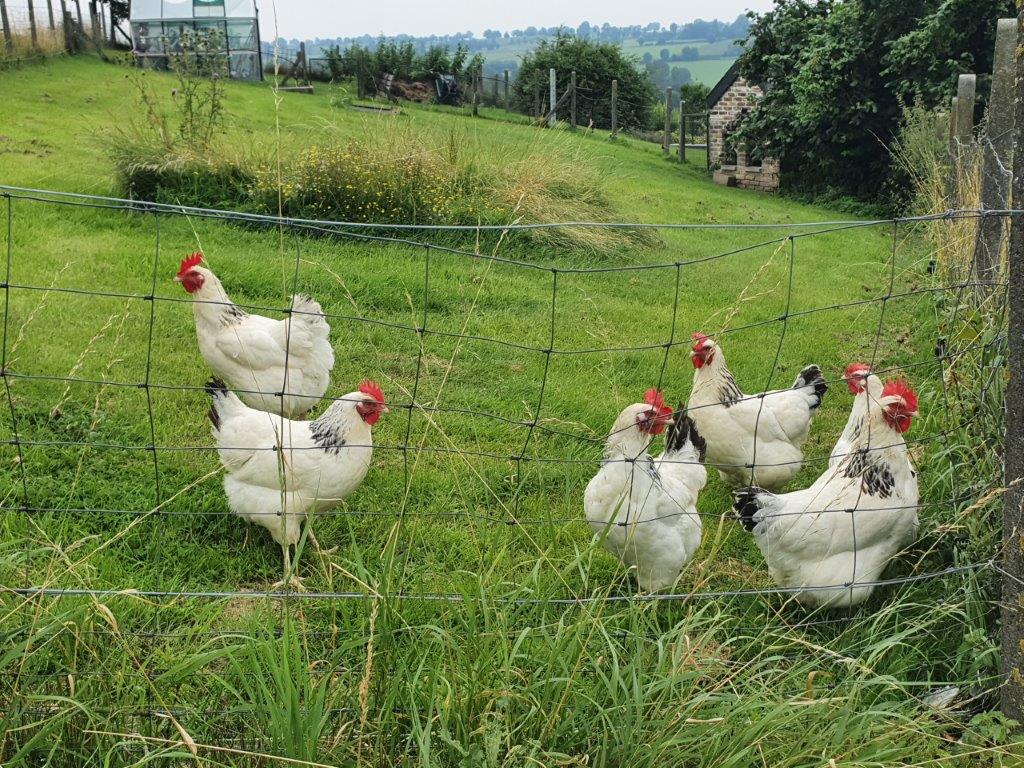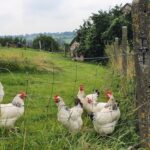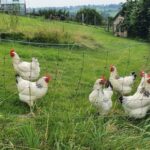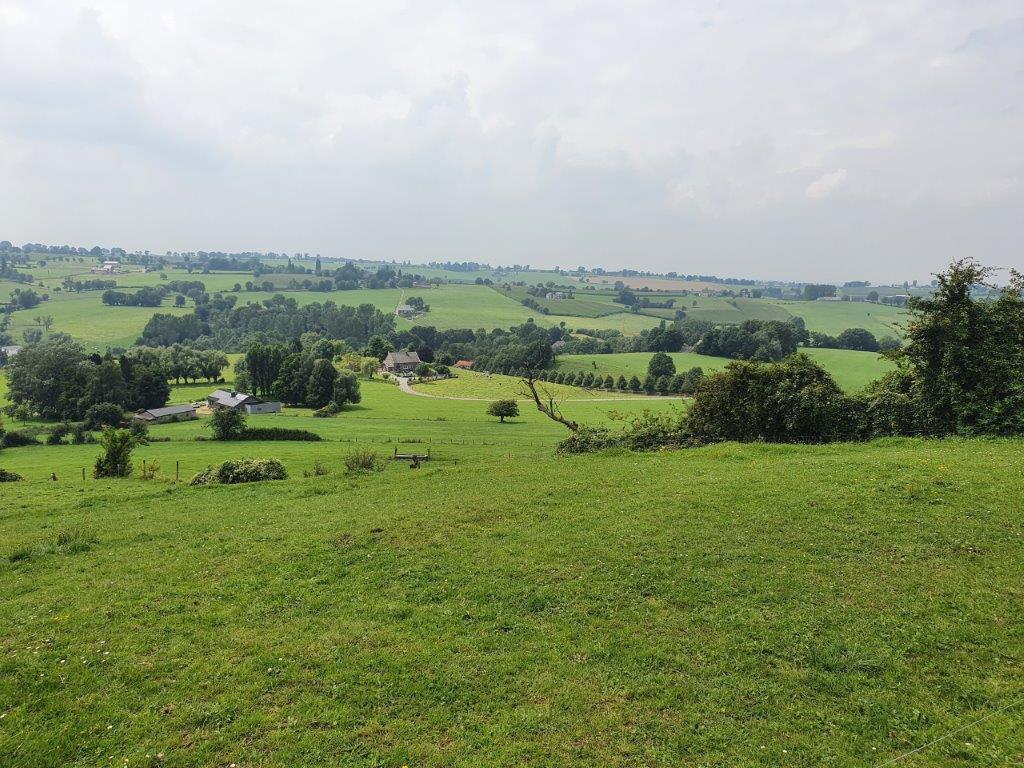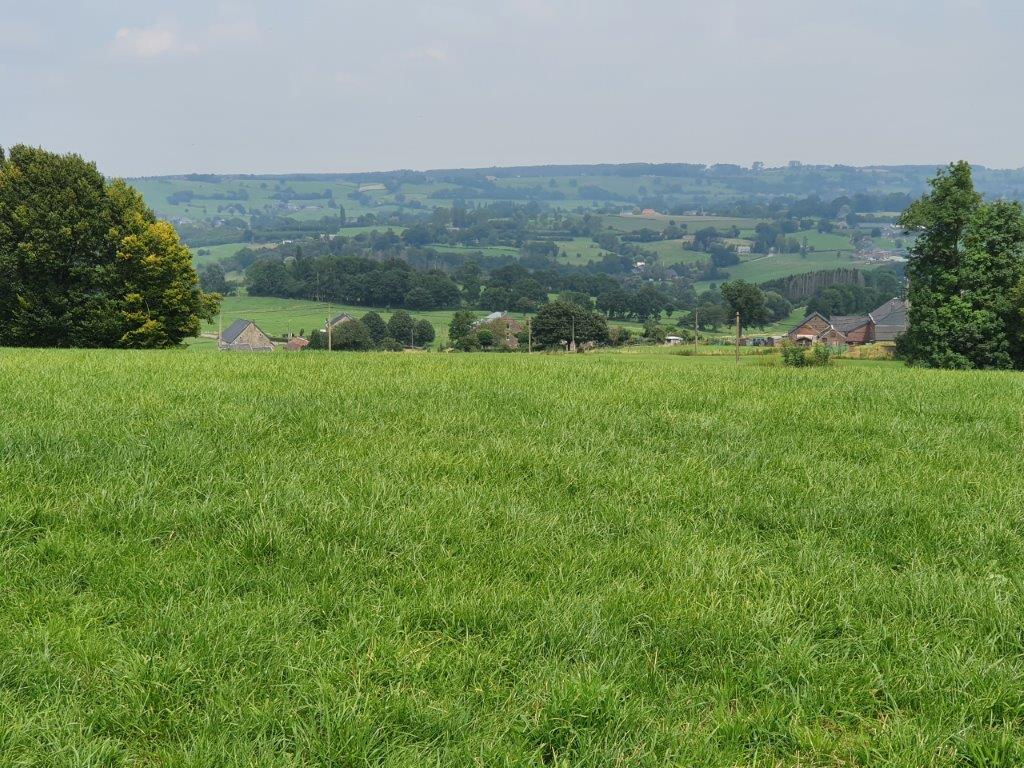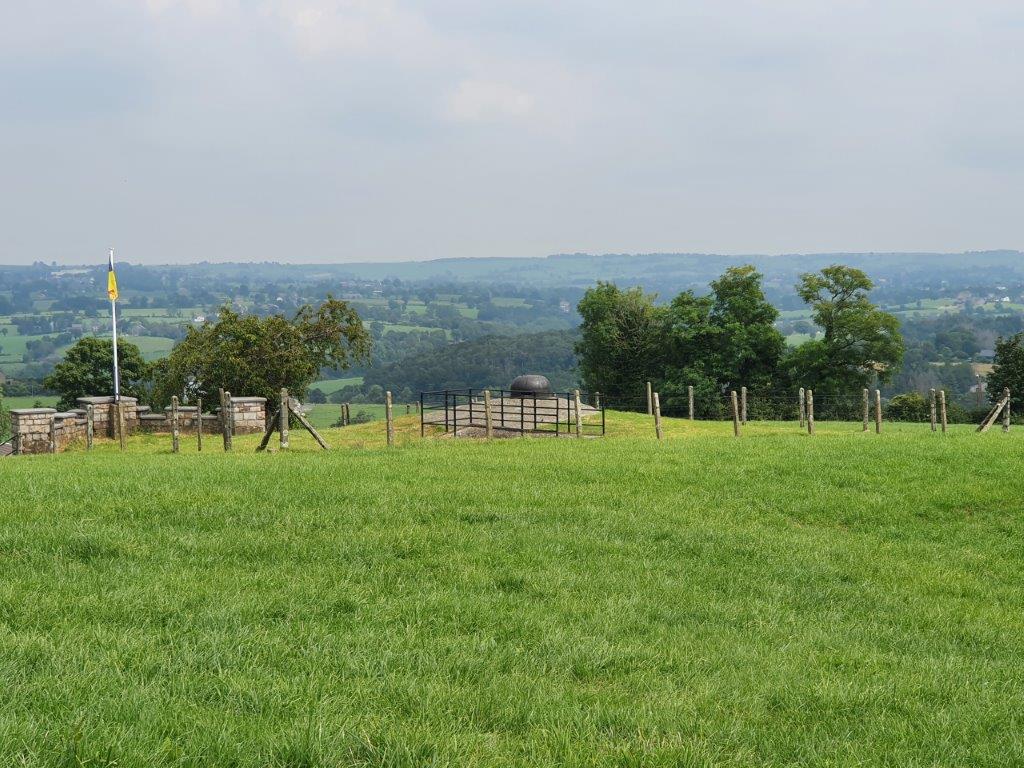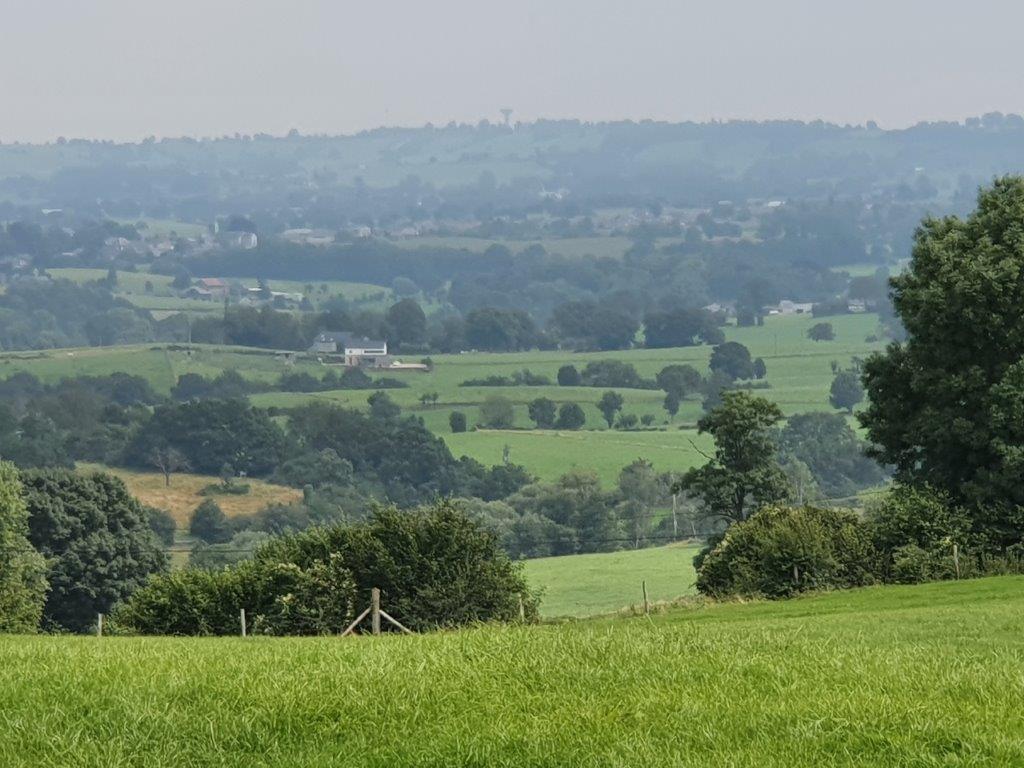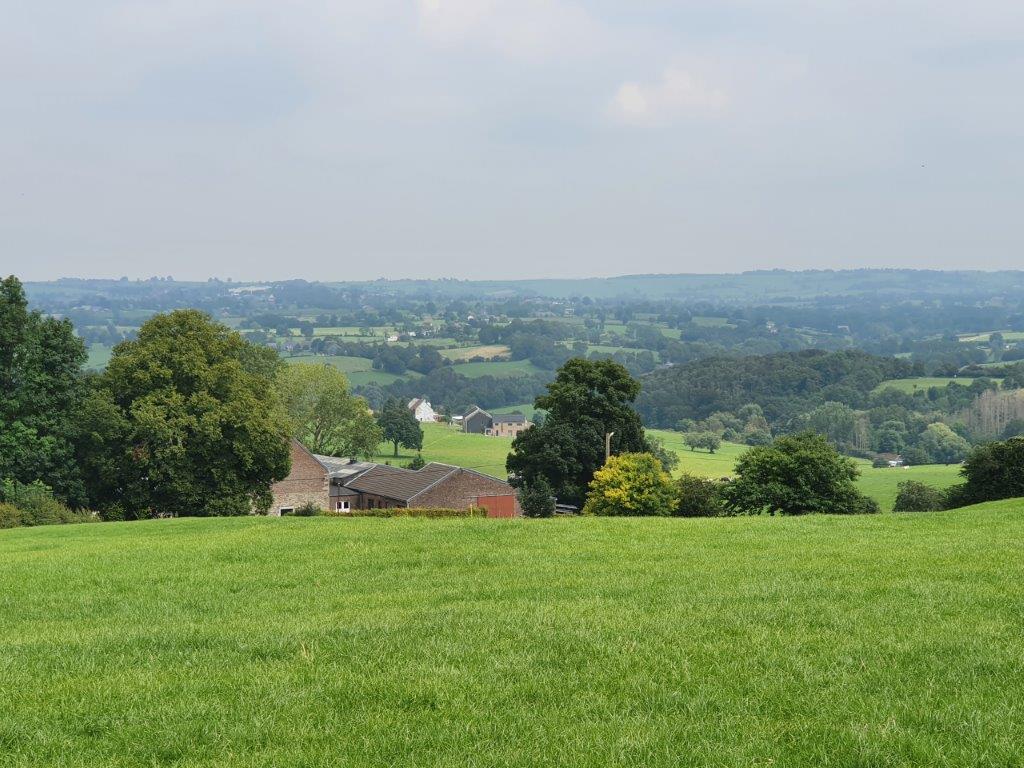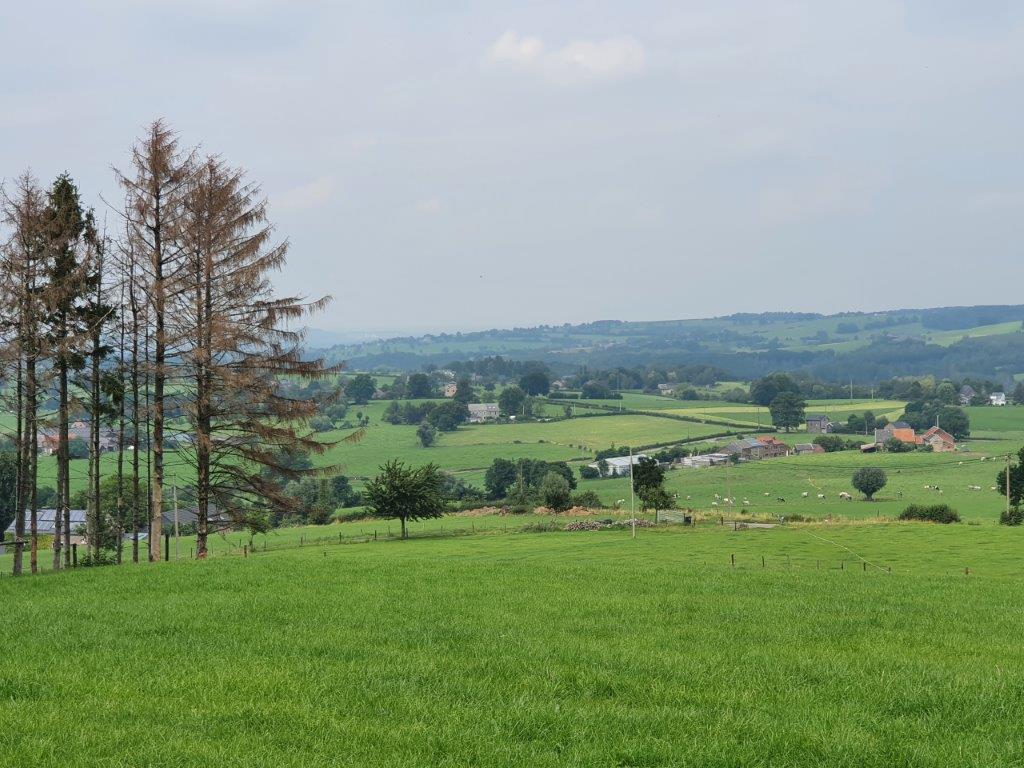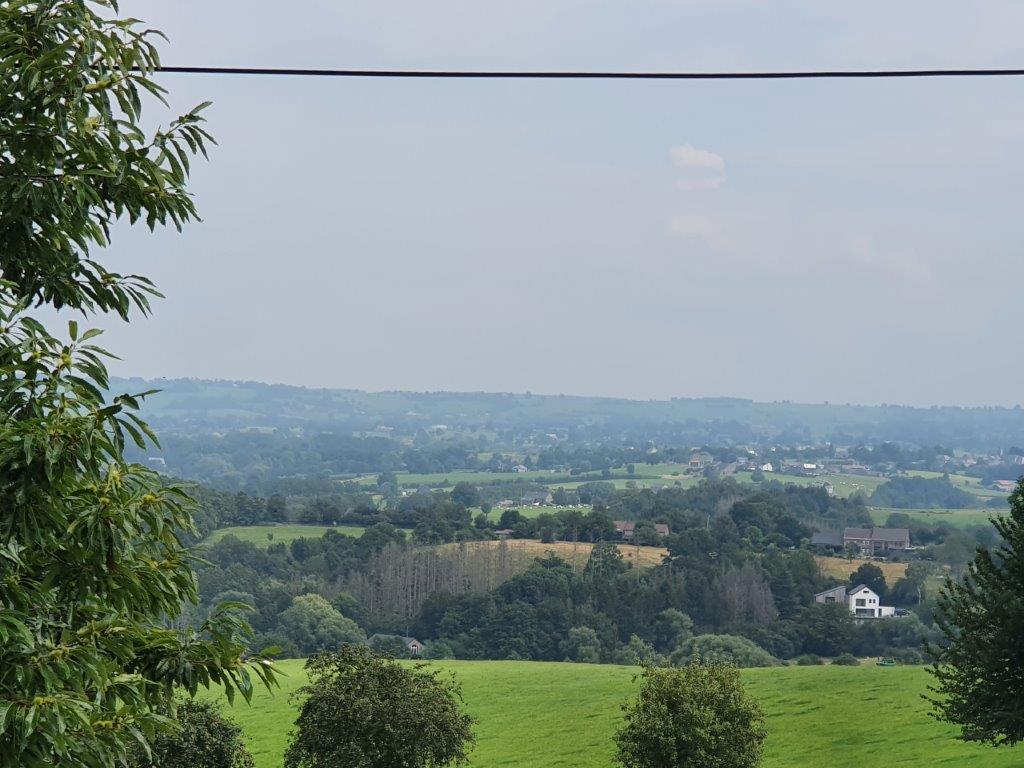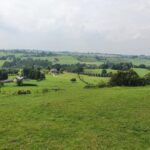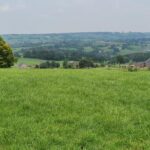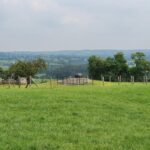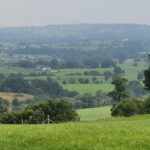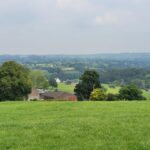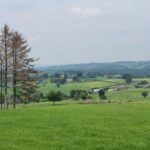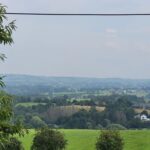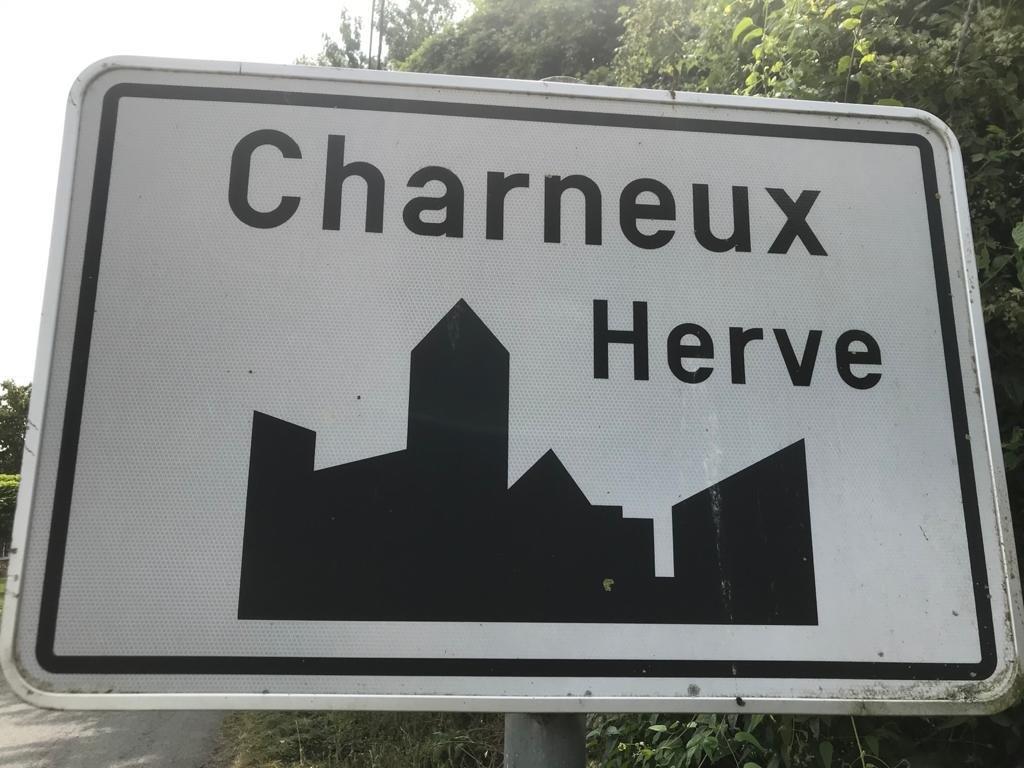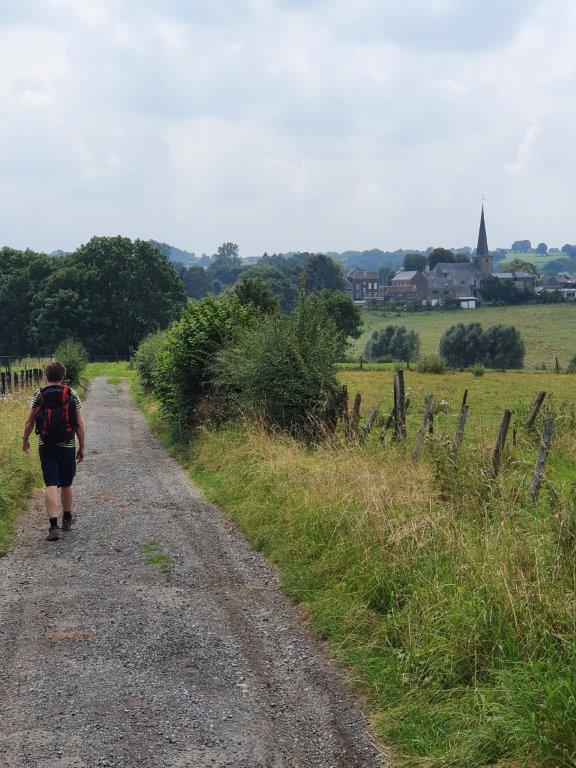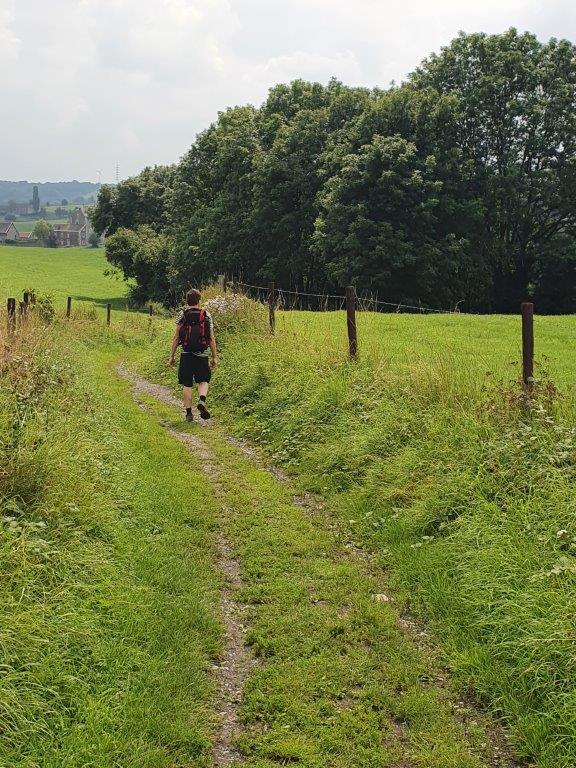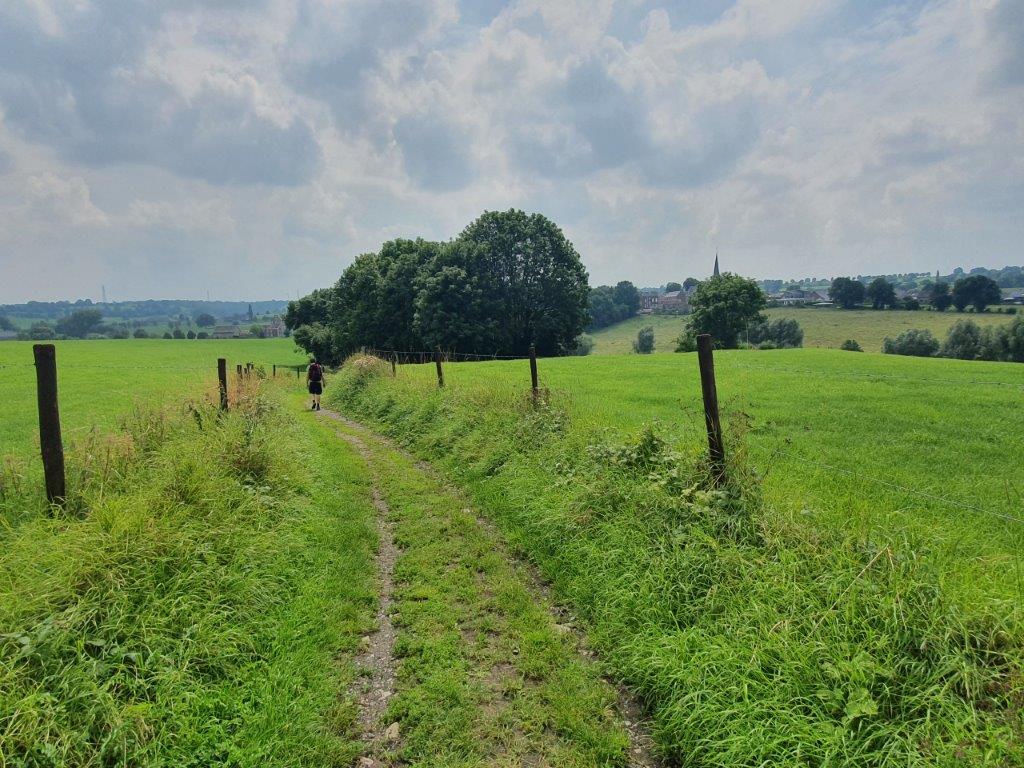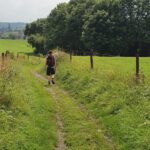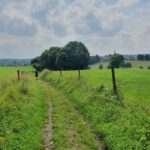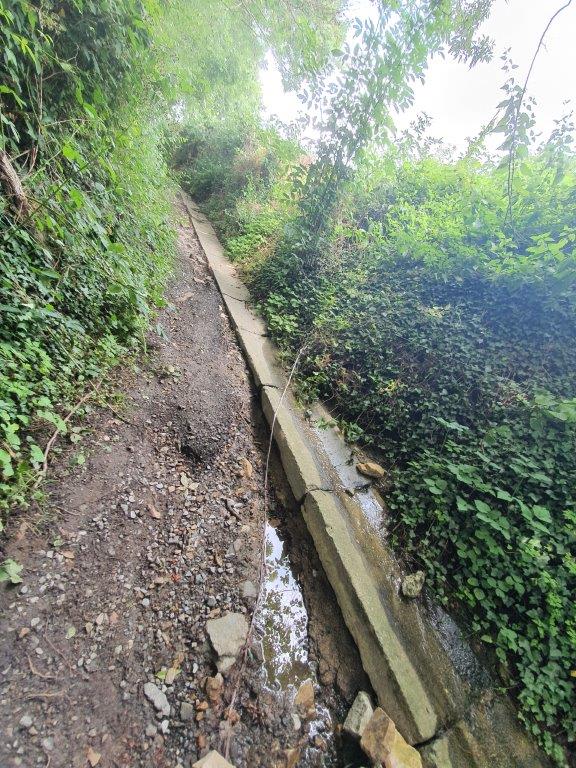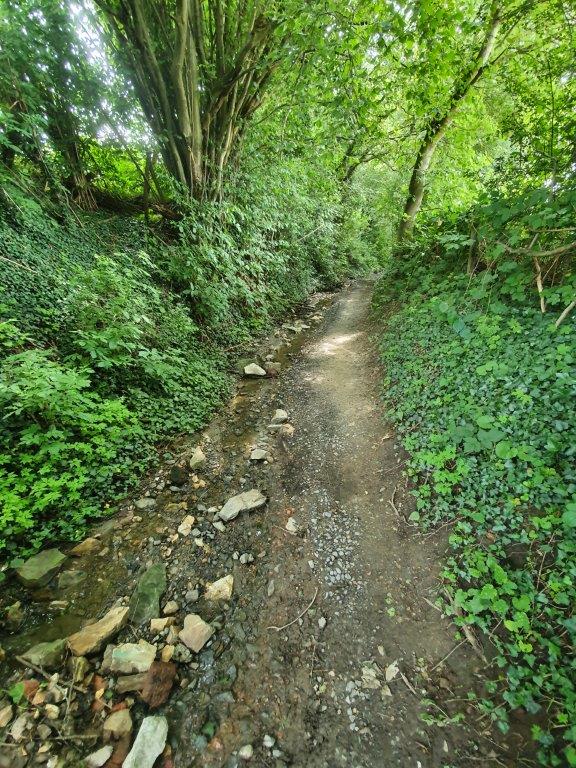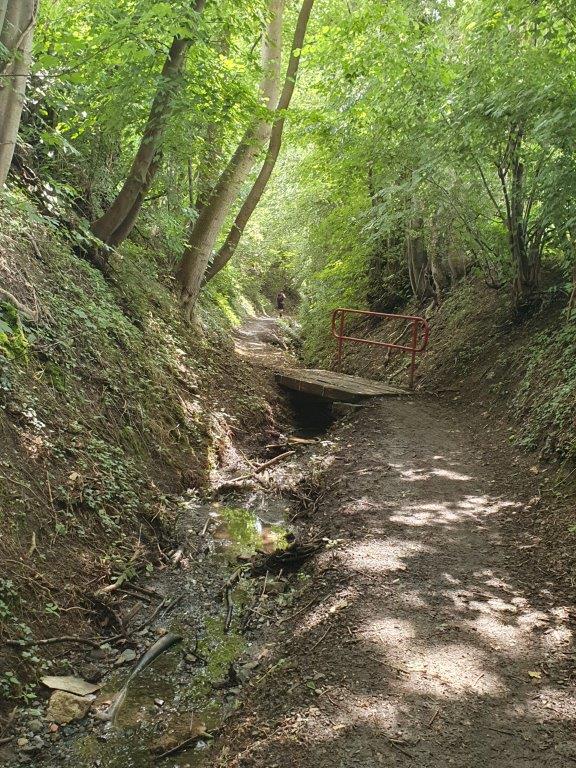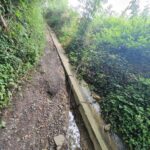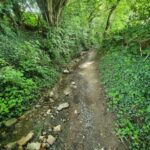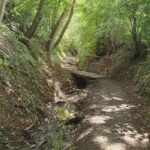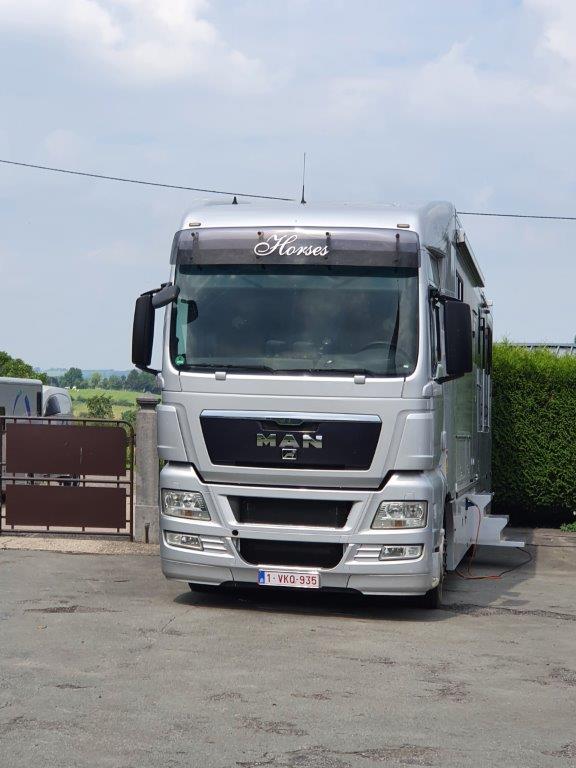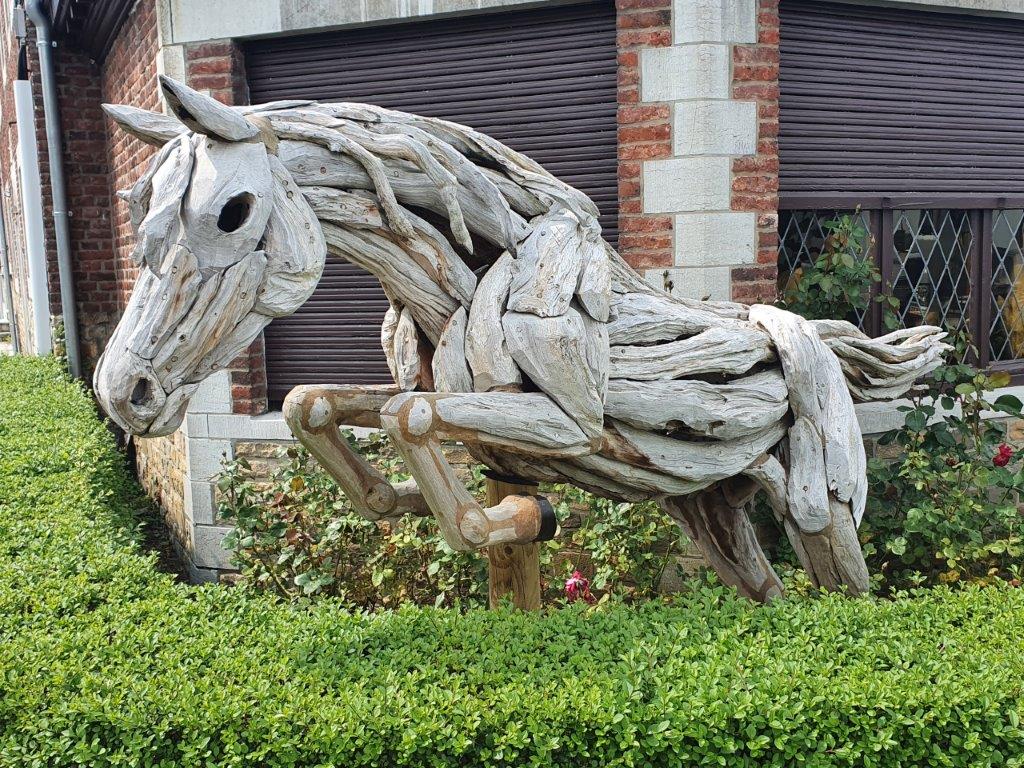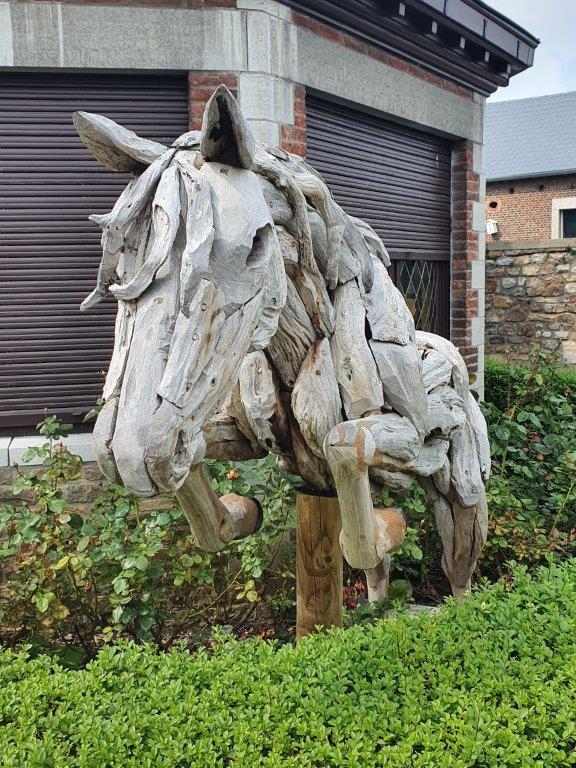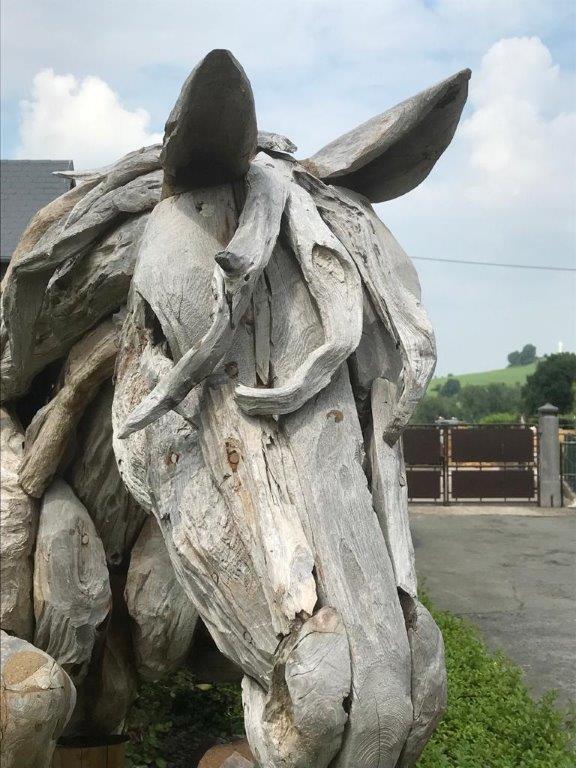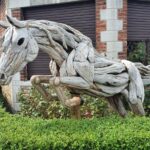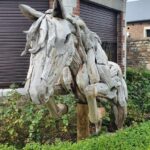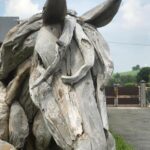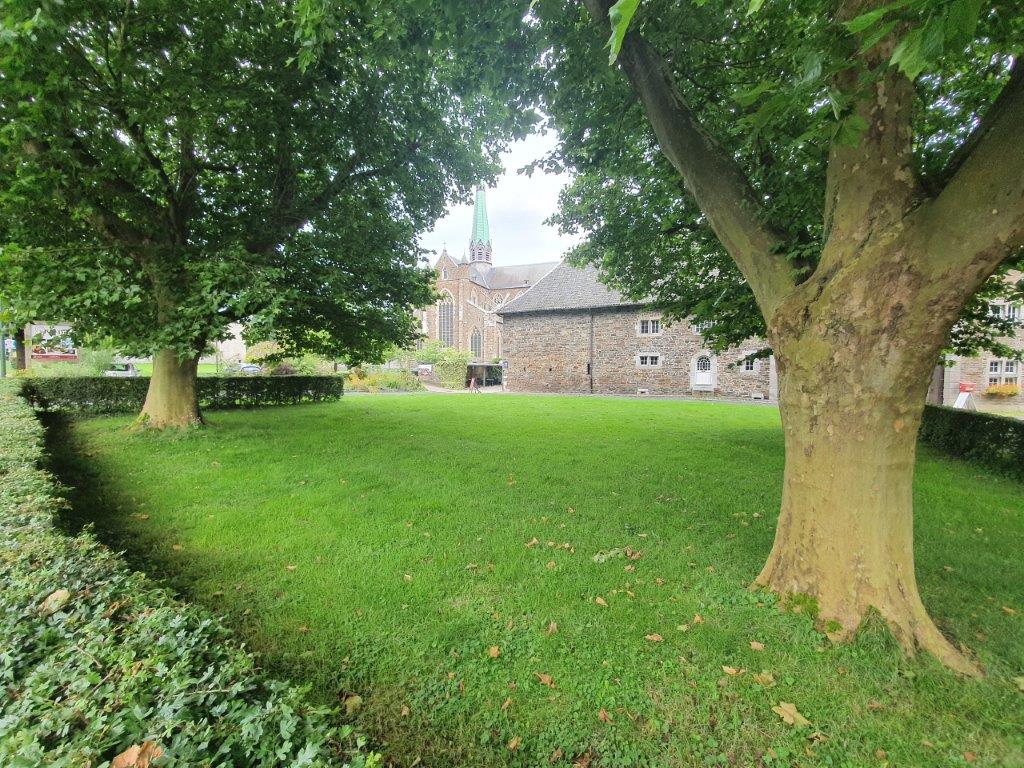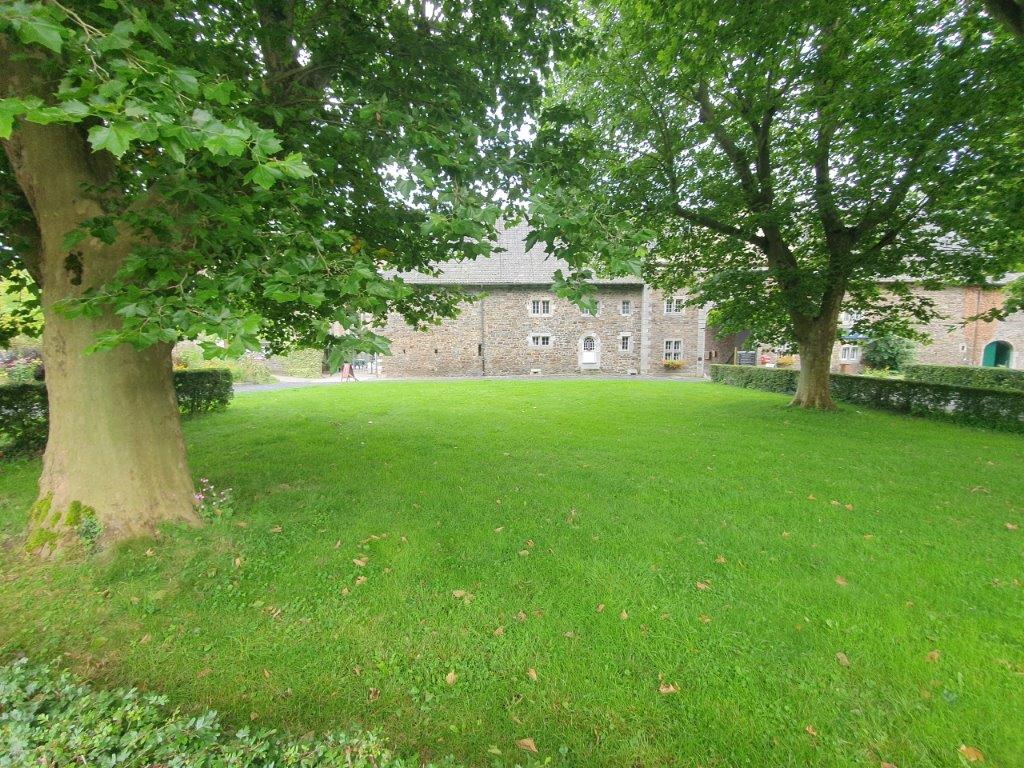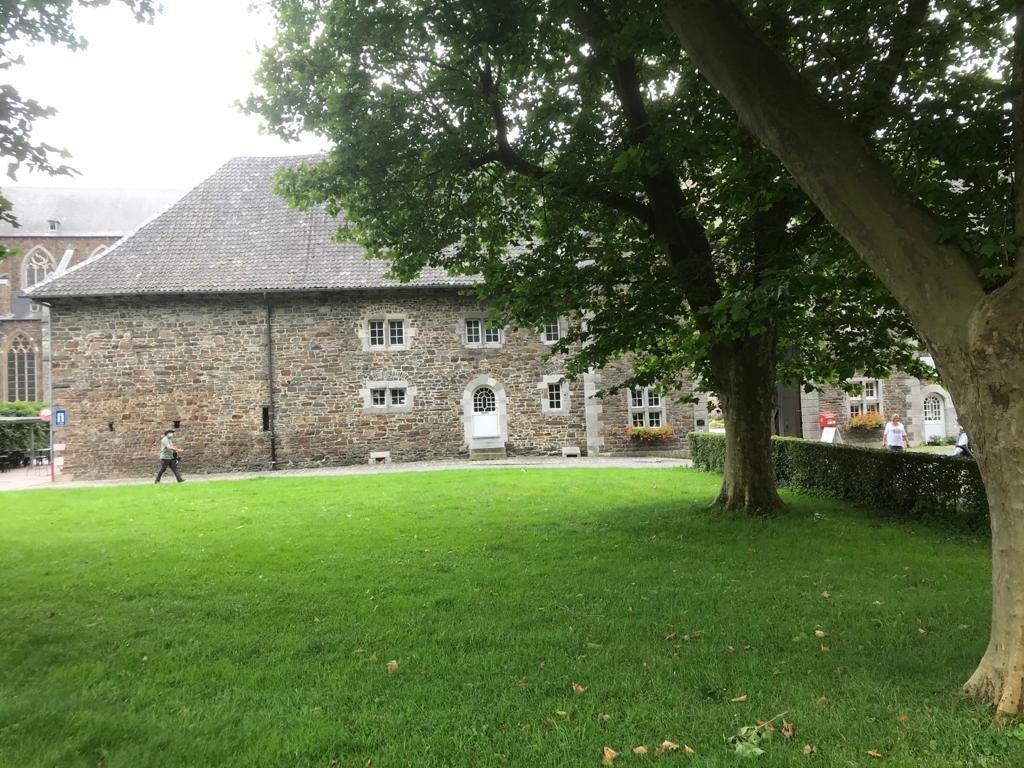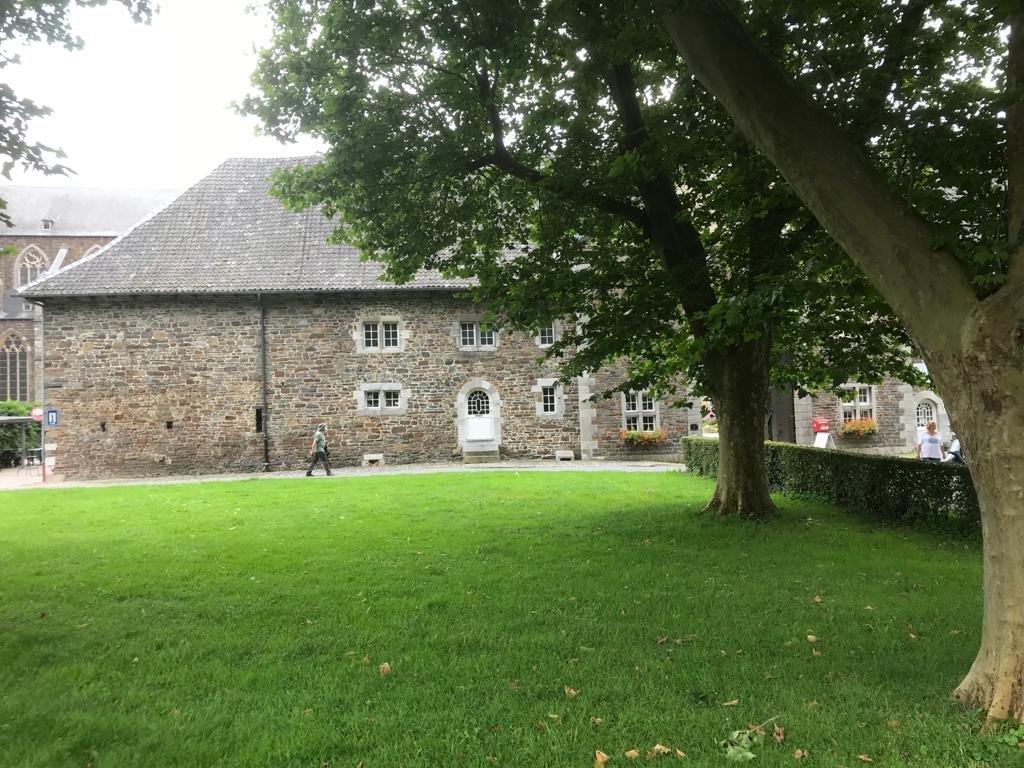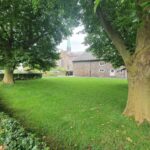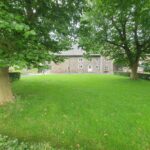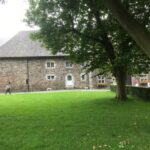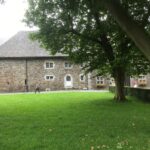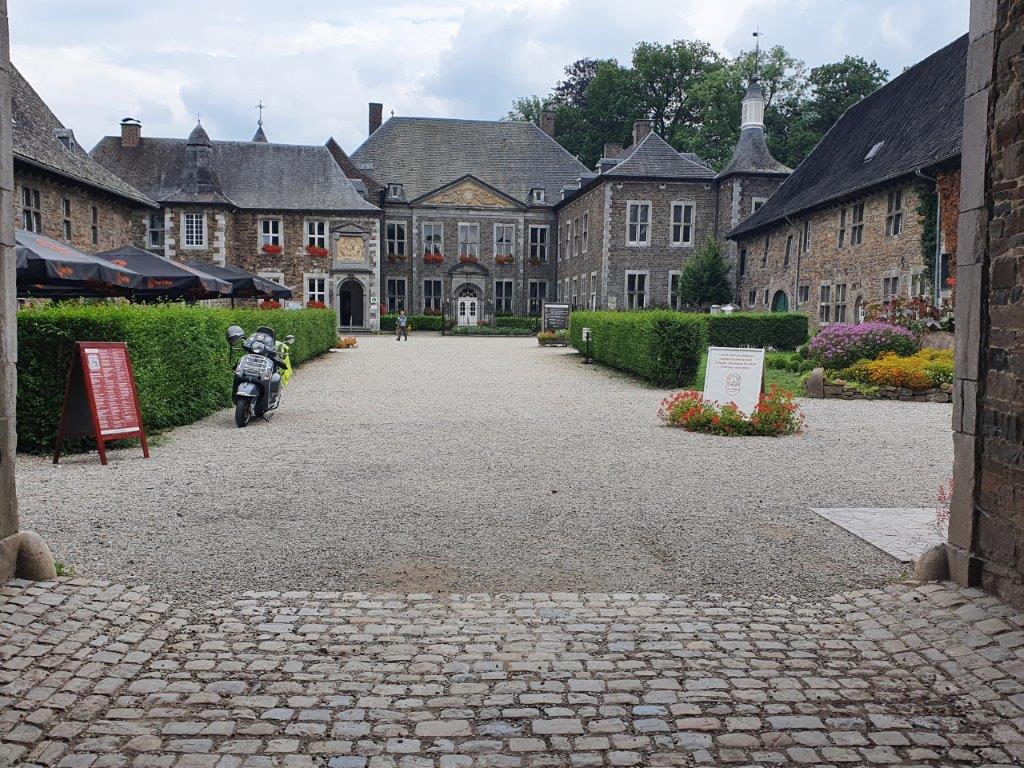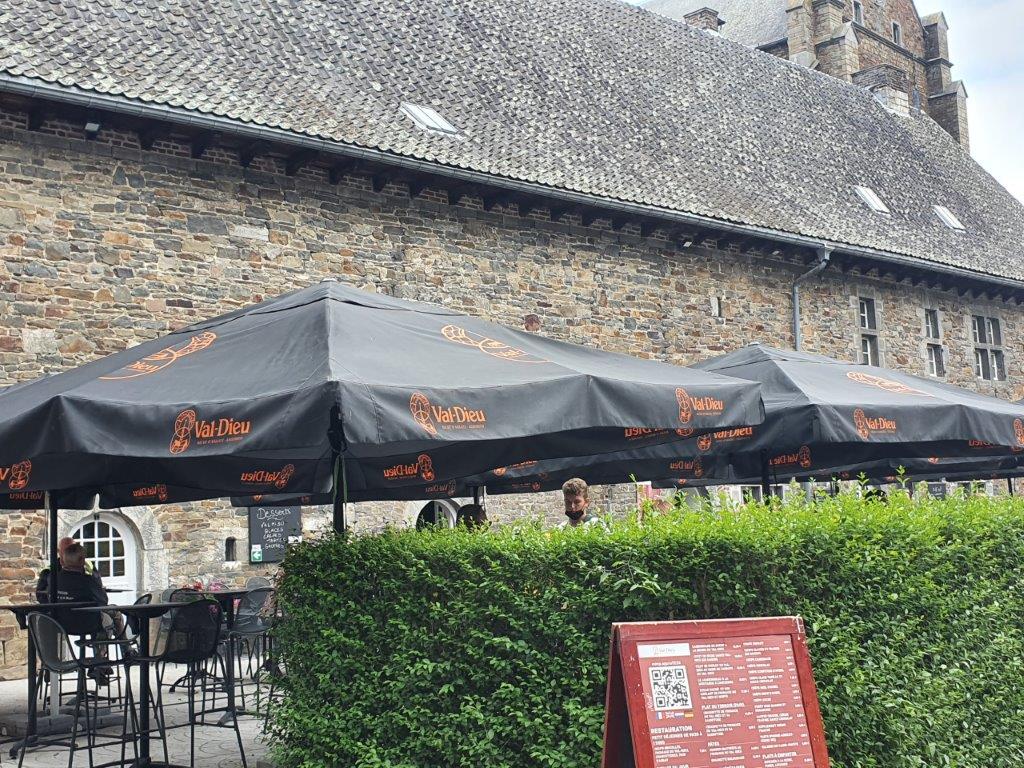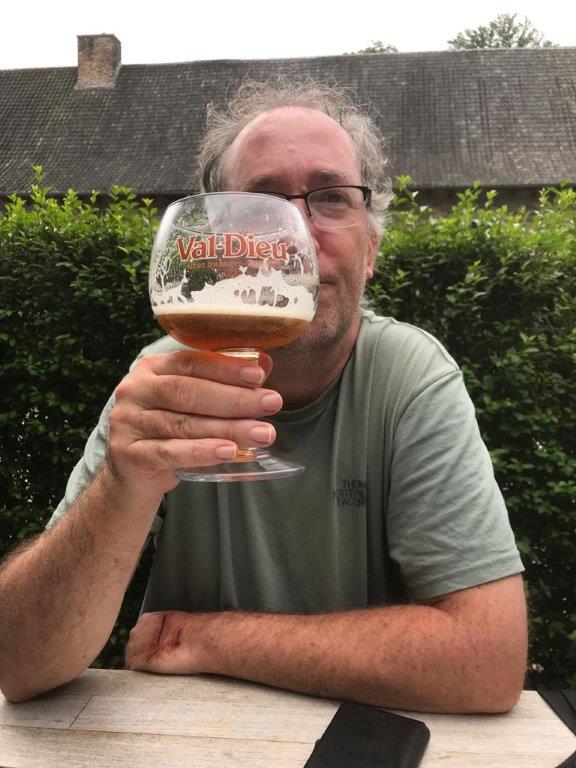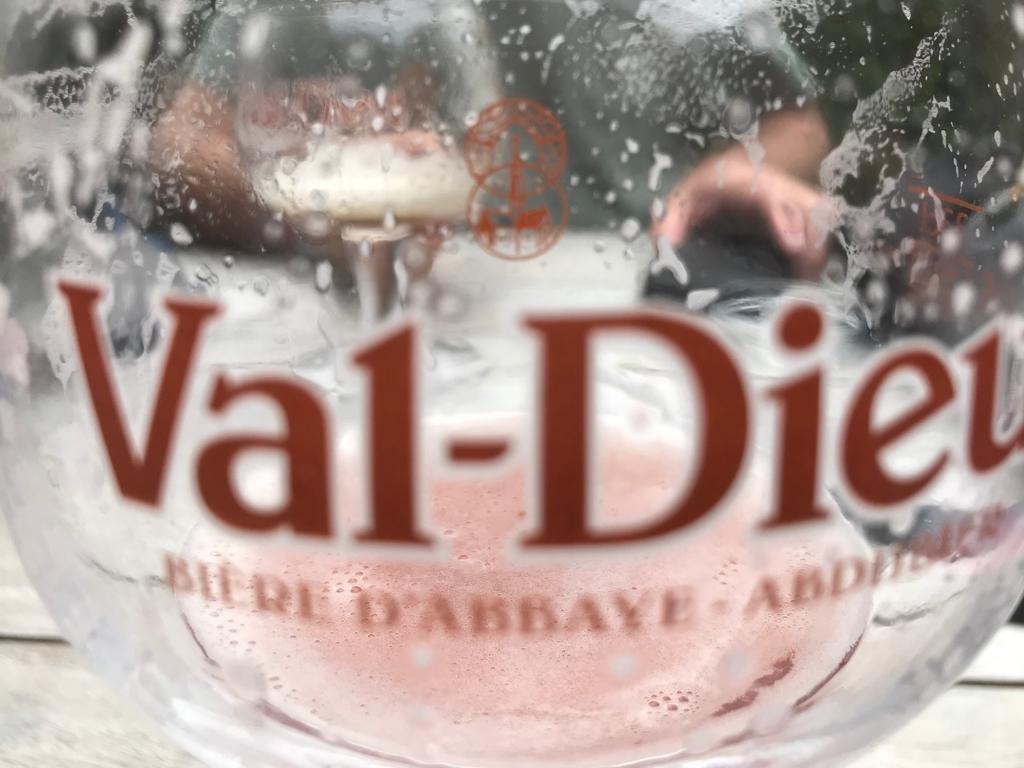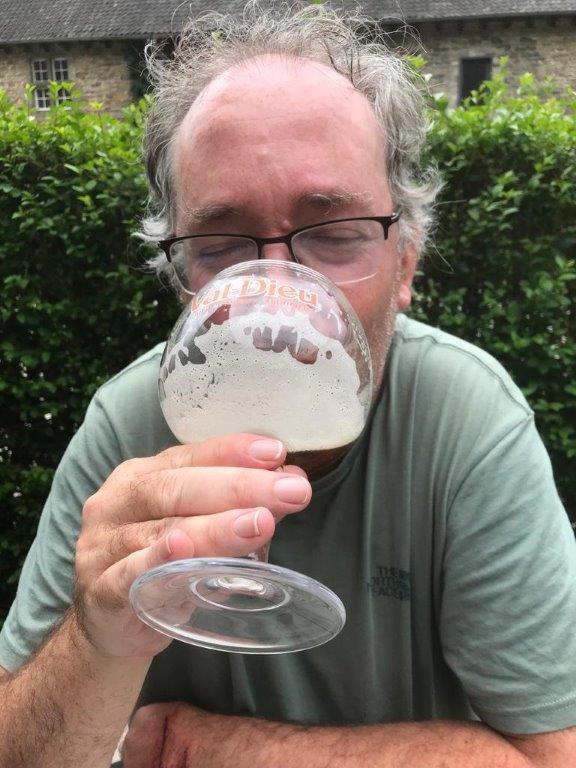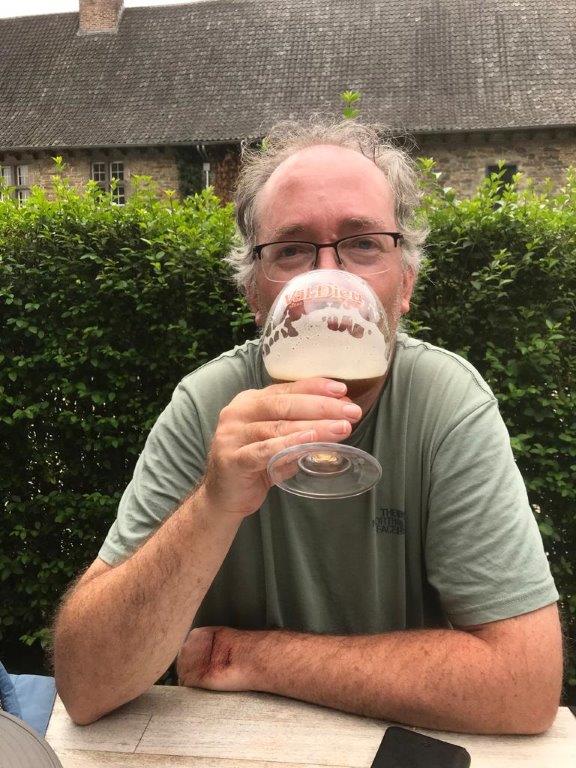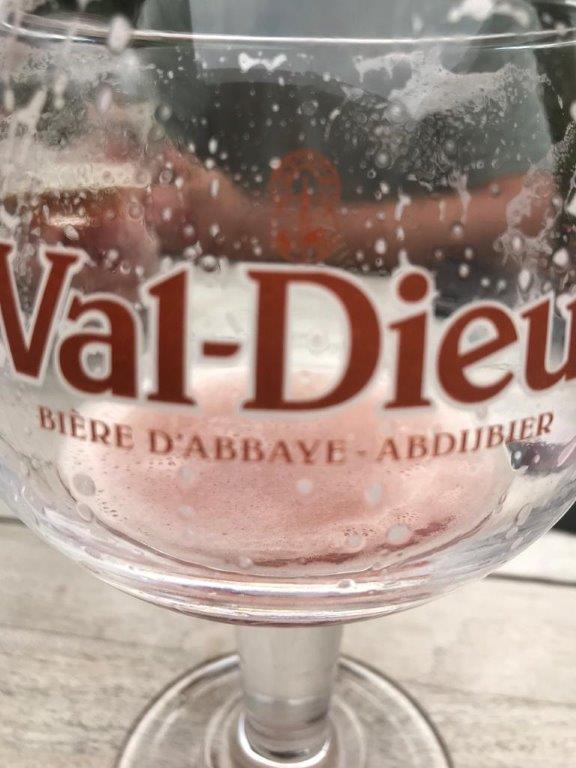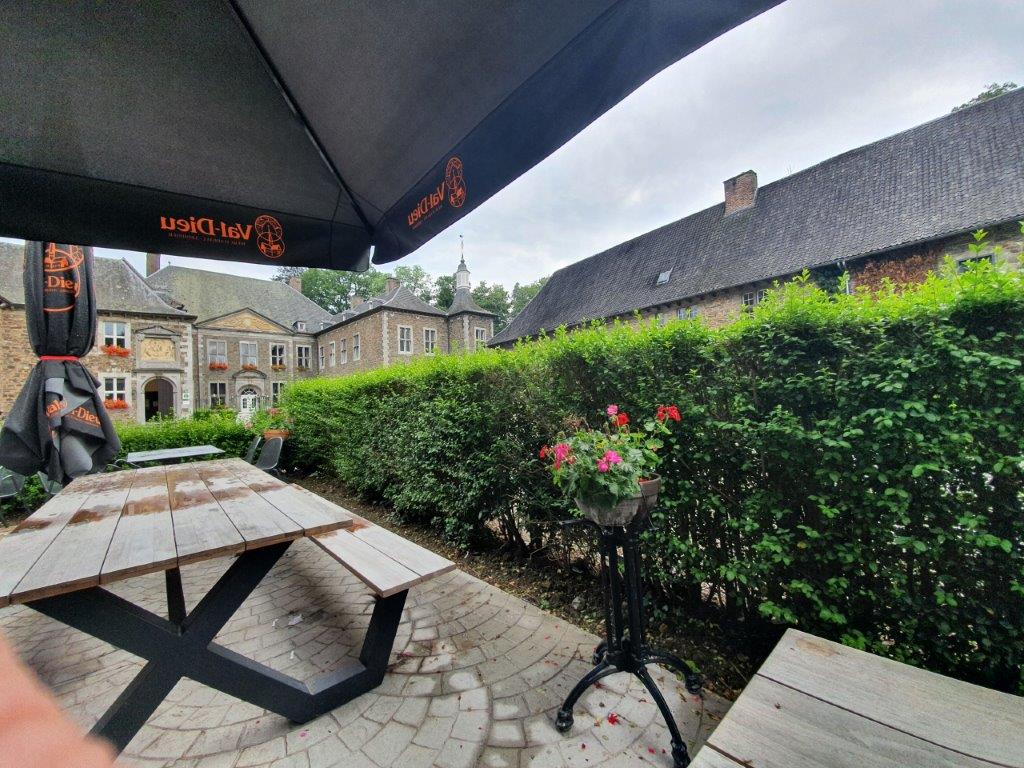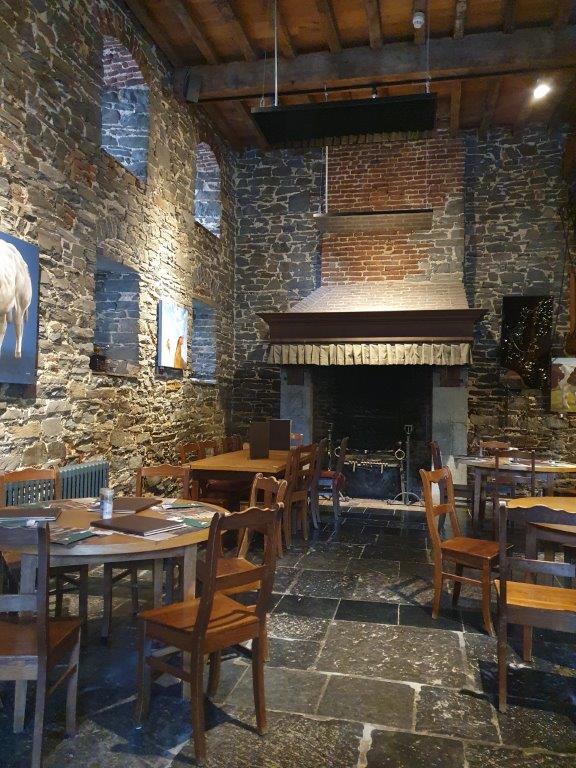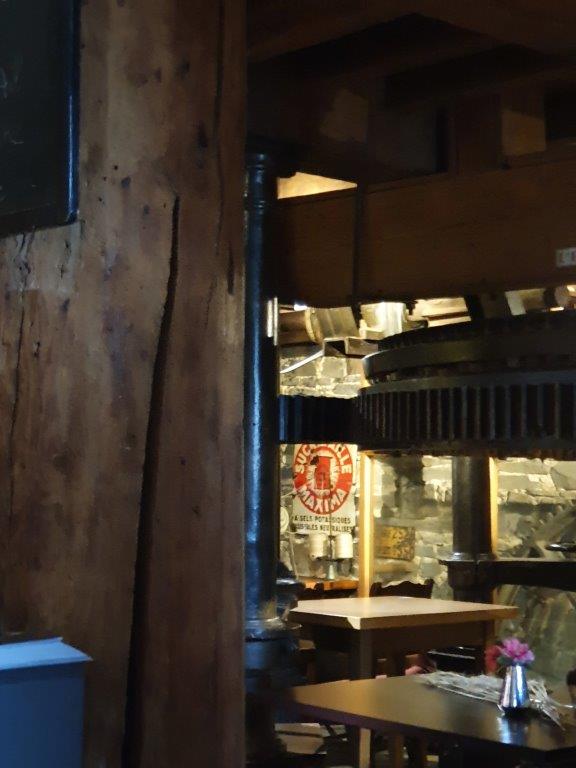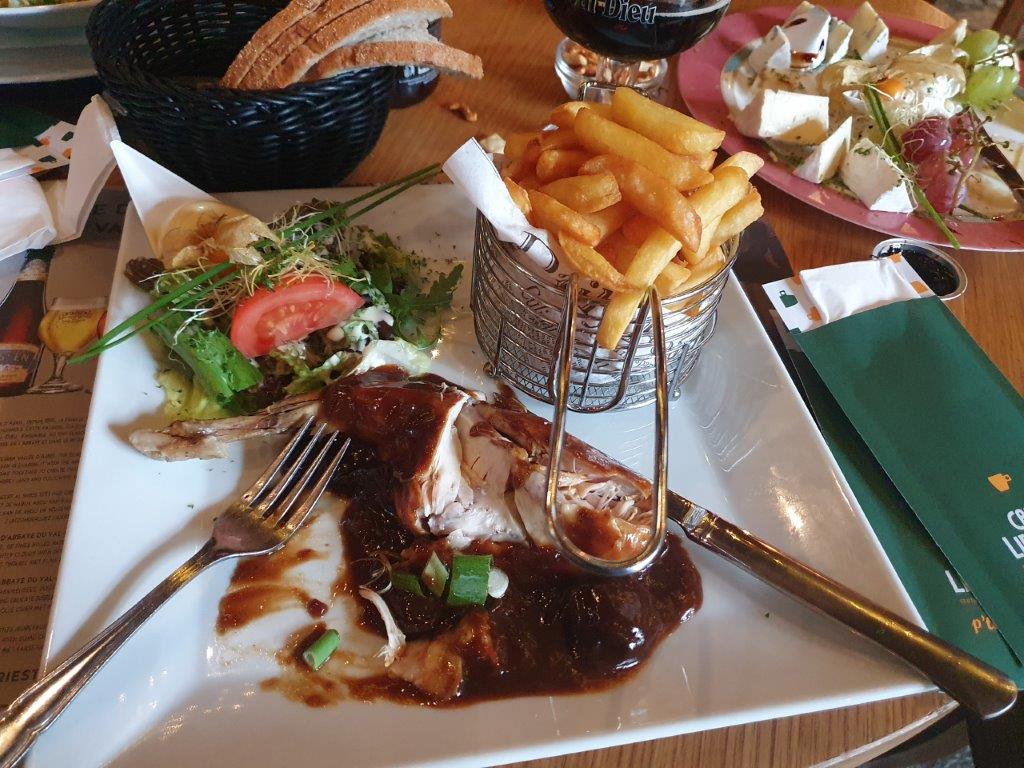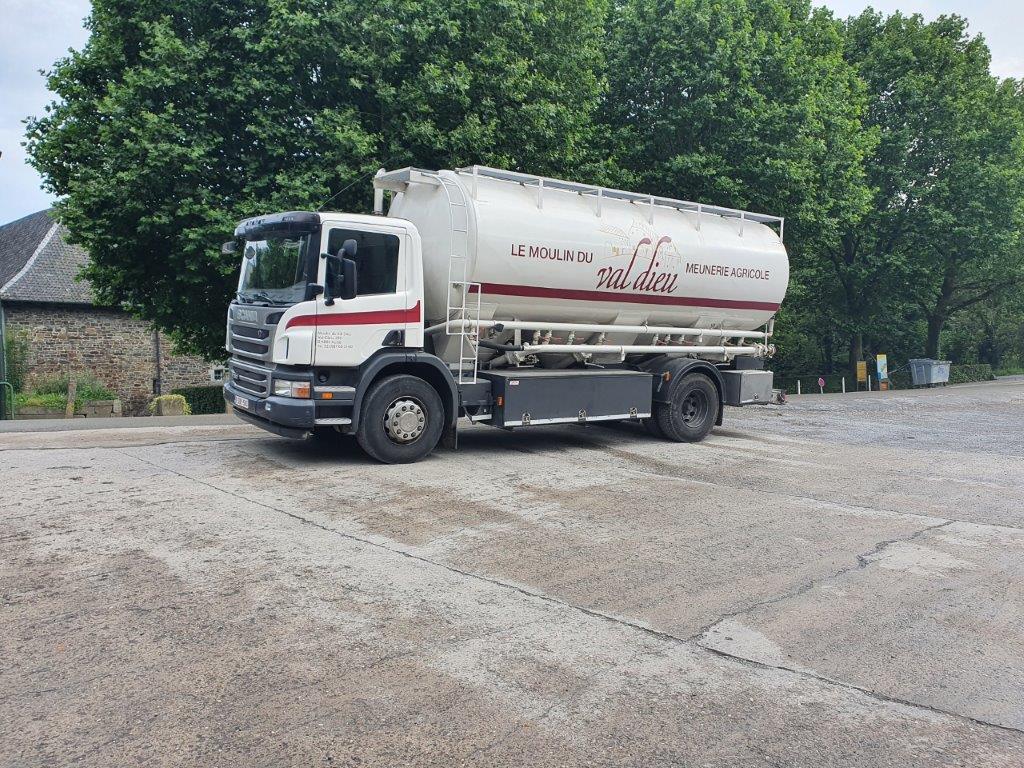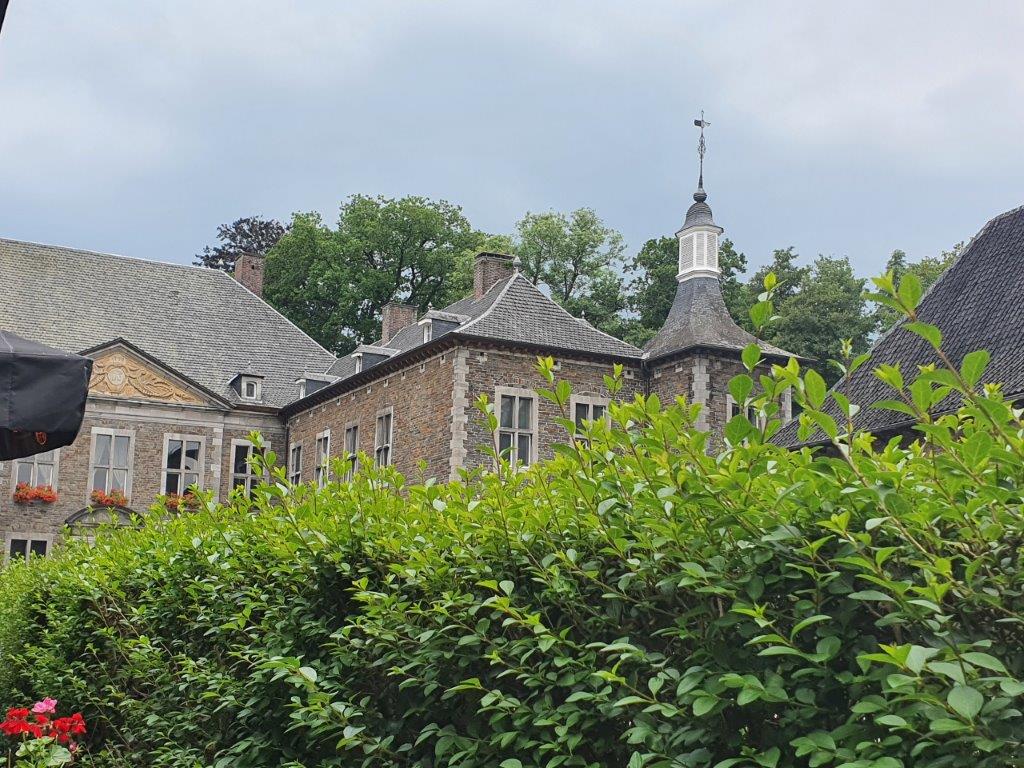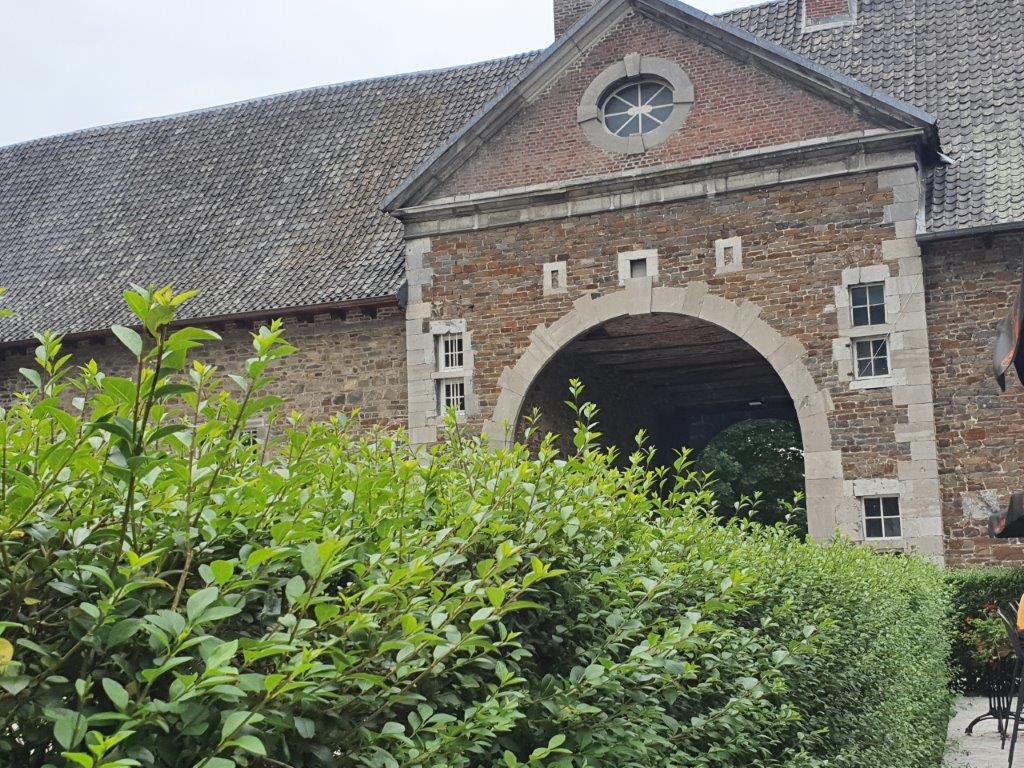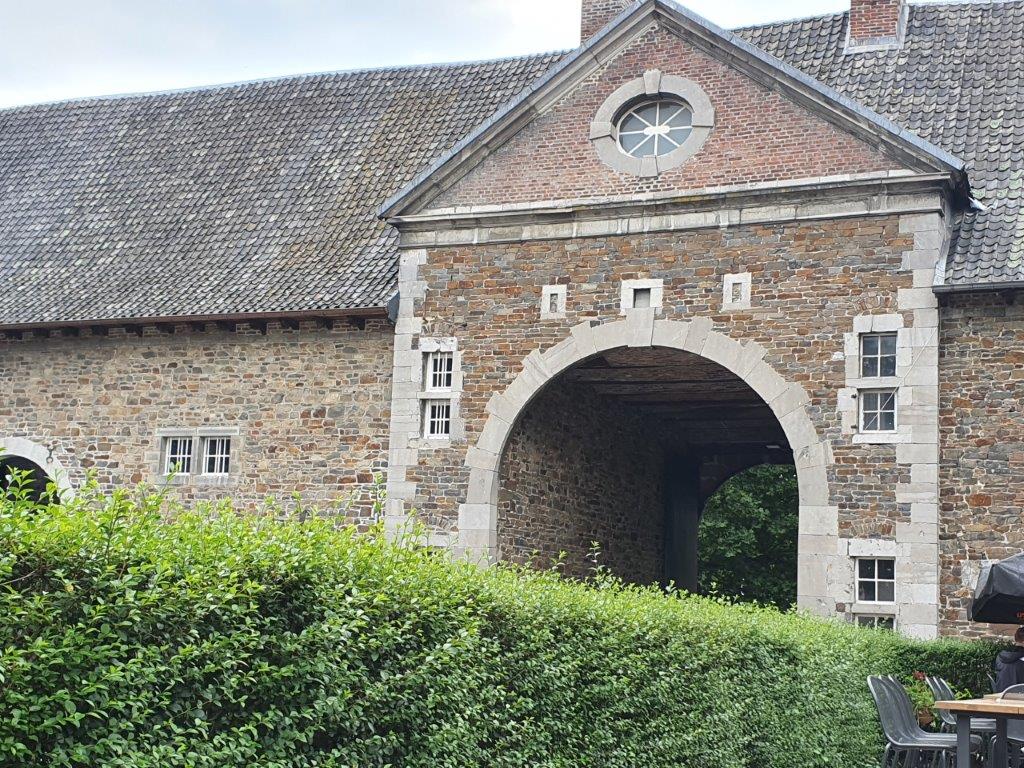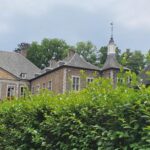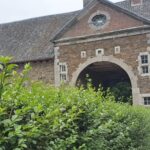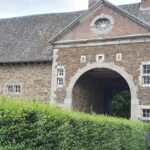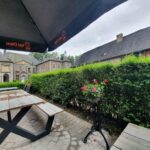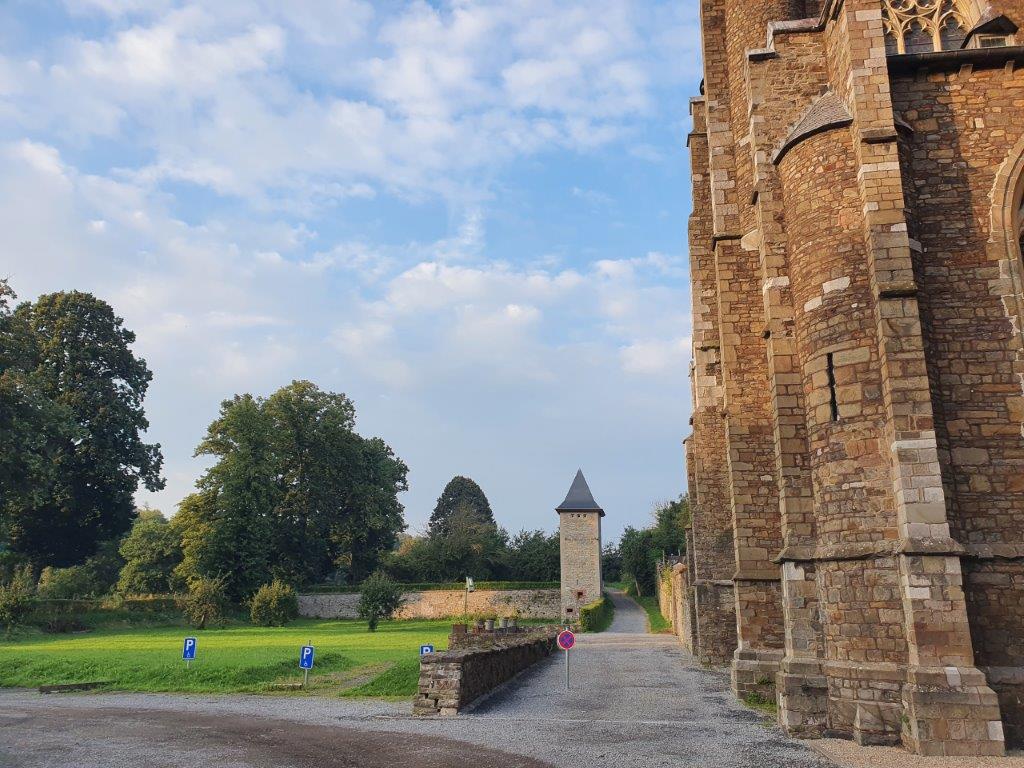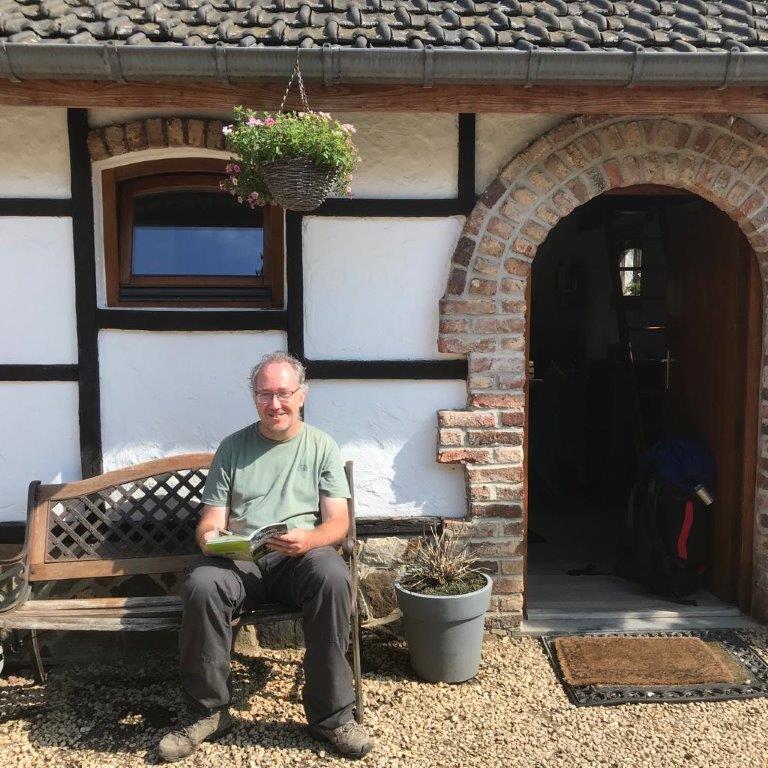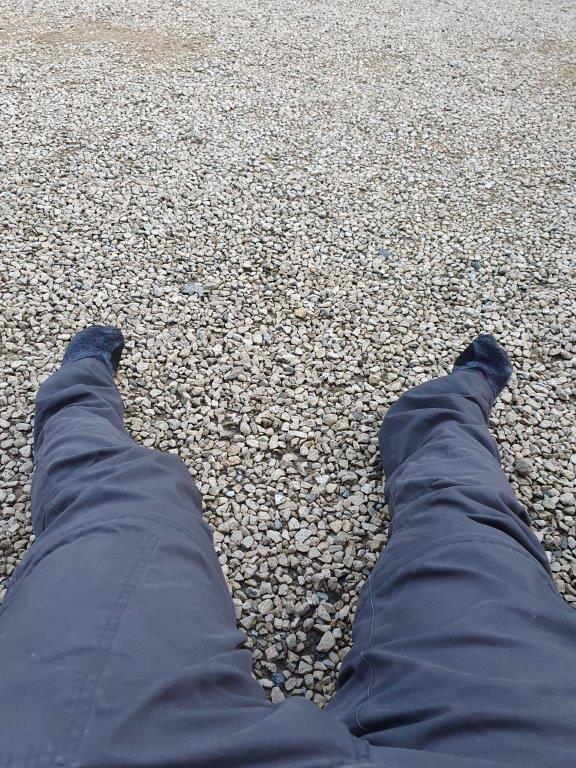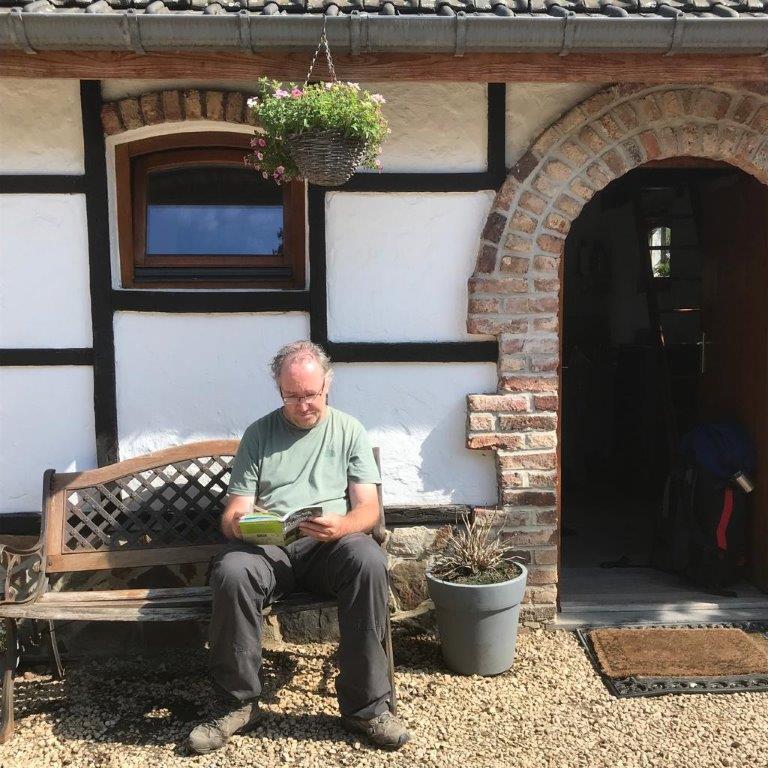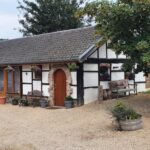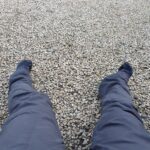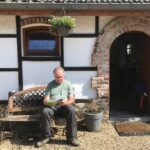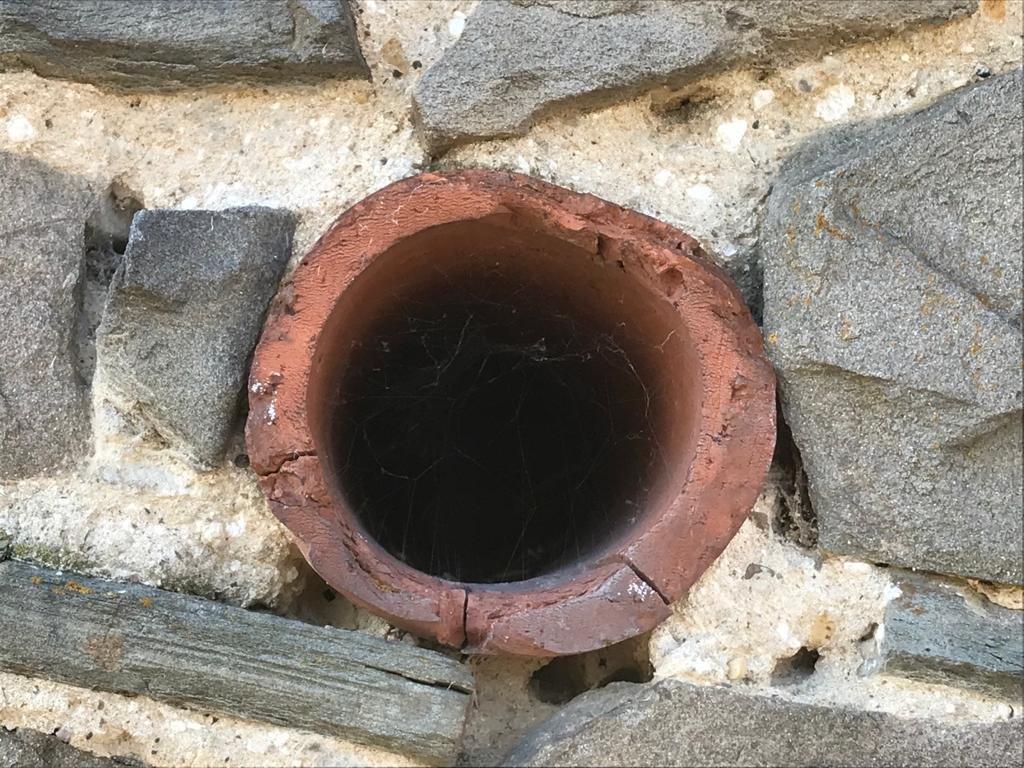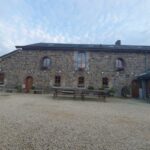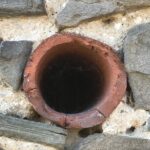Dutch Mountain Trail Deviation: Of “Long” walks, Smelly cheese & Abbey beers – Circular Herve Country/Abbey of Val Dieu walk
No long walks today, no carrying of a large backpack either. Today The Wandelgek had planned for a relaxing day in Herve County…
La Bushaye 2
But 1st things 1st. After a shower the owner came visiting us and she brought a large picknick basket full of breakfast goodies. There was fresh bread and cheese and slices of meat and jam and sirup. Best of all however, was a local Herve cheese (I love cheese from this region).
Herve cheese
Limburger (in southern Dutch contexts Rommedoe, and in Belgium Herve cheese) is a cheese that originated in the Herve area of the historical Duchy of Limburg, which had its capital in Limbourg-sur-Vesdre, now in the French-speaking Belgian province of Liège. The cheese is especially known for its strong smell caused by the bacterium Brevibacterium linens.
Herve cheese has been produced since the 15th century.
History and geographic origins
The Herve name has become the modern European protected name for the cheese, while the Limburger name is used for the same style when made in other regions. Herve cheese, or “Fromage de Herve”, is still produced in the territory of the old Duchy of Limburg, in Belgium, where it has been produced since the 15th century. Herve is located near Liège, and the borders separating Belgium from the Netherlands and Germany. The “Land of Herve” is a hilly area between the Vesdre and Meuse rivers. The Duchy existed until the French Revolution as a part of the Holy Roman Empire, and the cheese style became popular in other areas, known by the name of its country of origin.
Production
Herve is a Belgian rind washed soft cheese made from raw cow’s milk. The aging process takes place in ripening cellars of the Herve countryside, sometimes cut into its chalky rock.
It is sometimes flavored with herbs. Herve has a pale yellow interior with a glossy reddish-brown coating created by the bacteria that grow during its 3-month aging. It is usually shaped into a brick when sold. The taste and flavor of the cheese deepens during the period of ripening. When young, the interior is sweet, and with age it becomes spicy.
Description
In its first month, the cheese is firmer and more crumbly, similar to the texture of feta cheese. After about six weeks, the cheese becomes softer along the edges but is still firm on the inside and can be described as salty and chalky. After two months it is mostly creamy and much smoother. Once it reaches three months, the cheese produces its notorious smell because of the bacterium used to ferment Limburger cheese and many other smear-ripened cheeses. This is Brevibacterium linens, the same one found on human skin that is partially responsible for body odor (particularly foot odor).
Uses
It is often regarded as one of the most popular cheeses in Belgium.
One way to serve limburger is the limburger sandwich. After three months, when the cheese has ripened, it becomes spreadable. The cheese is often spread thick (more than 0.5 cm or 0.2 inch) on firm-textured 100% rye bread, with a large, thick slice of onion, and is typically served with strong black coffee or lager beer. Alternatively, chunks or slices of the cheese up to 1.5 cm (0.6 inch) thick can be cut off the block and placed in the sandwich.
This sandwich remains very popular among the descendants of Swiss and German immigrants in the Midwestern United States, in places including Wisconsin and Ohio. In the early 20th century, Limburger sandwiches became a popular lunch for working people due to their affordability and nutritious qualities. They were frequently accompanied by a glass of beer.
However, it is markedly less popular among the descendants born after about 1960, mainly because of the permeating smell and the inconvenience of going to specialty cheese and sausage shops to buy it.
In Wisconsin, the Limburger sandwich can be found on menus at certain restaurants, accompanied by brown mustard. There are several variations, such as the addition of bologna, lettuce, tomato, roasted walnuts, and the use of white or French bread. Sometimes the rind of the cheese is rinsed or removed to weaken its odor.
The odor is not to be taken lightly. The Wandelgek visited the Herve county on many occasions and on one of these he was driving home north with his brother. In the closed trunk of the car, was a closed plastic bag, in which was another closed plastic bag, in which was a piece of Herve cheese, wrapped in plastic and paper. After driving for about half an hour, his brother asked The Wandelgek, what stinking smell was coming from the rear of the car and he had to admit that it was the cheese’s smell, penetrating through every piece of wrapping. I answered him that the very best tasting cheeses smelled like unwashed walking socks, worn for half a year during a hot summer 🧦👣👃🤢😂
After breakfast we spend a bit of time outside of our studio/cabin (which was still being renovated in 2005) on the courtyard opposite of the beautifully converted farm house…
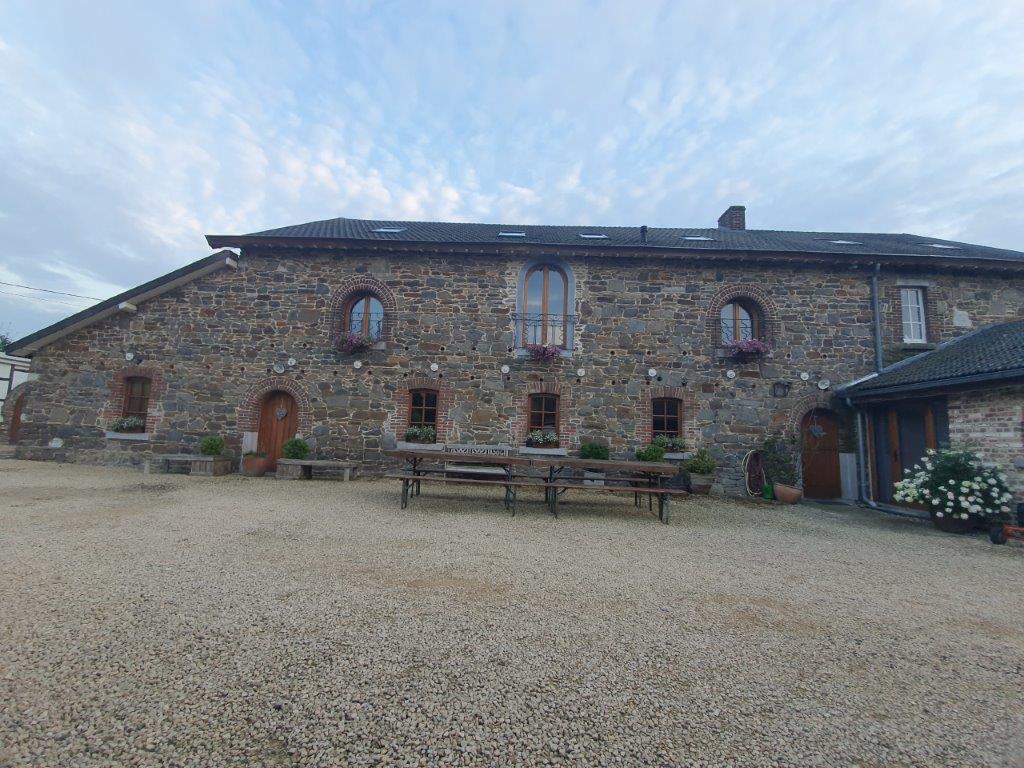 Last time The Wandelgek spend the night there was another owner and then he had a room in the farm house. the farmhouse also had a common room for breakfast and to watch television which had been a stable before and which had a particularly beautiful ceiling…
Last time The Wandelgek spend the night there was another owner and then he had a room in the farm house. the farmhouse also had a common room for breakfast and to watch television which had been a stable before and which had a particularly beautiful ceiling…
There was a small bench against the outside wall of the cabin. Wonderful place…
I can honestly say that La Bushaye will beva place where I’d love to revisit for some more exploring of The Herve country and The Voerstreek as well.
More info at: La Bushaye
From the farm house we started a small circular walk through the Herve County.
Pays de Herve/Herve country/Land of Herve
The Pays de Herve (Land of Herve) is a 420 km2 natural region of Wallonia, between the rivers Vesdre and Meuse and the borders separating Belgium from the Netherlands and Germany.
In the Land of Herve, the products are manifold. In first place are the Herve cheese and the apple and pear syrup. Meat lovers will find their happiness in the many delicious cured meats of the Land, including lev’gos (a typical, local sausage).
In the Land of Herve, good food goes hand in hand with good drink. Connoisseurs appreciate the cider and local beers during the festive meals.
Circular walk
Map
The country itself is like a hedgerow landscape, full of hedges and orchards with high fruit bearing trees. The river Berwinne runs through the Land of Herve and is bordering the estate of La Bushaye.
The Wandelgek had planned for a circular walk of approximately 8.5 kilometers in the area and we started from La Bushaye, going north, crossing the river Berwinne…
…and the route de Val Dieu (N650) into the Grises Pierre road. The landscape is absolutely gorgeous and a bit higher and steeper than it was in the dutch province of Zuid-Limburg. More south are Les haute fagnes (the high moors) and even more south the hill country of the Belgian Ardennes. But here we have a friendly rolling hill country where small agricultural farms are keeping some cattle or orchards with fruit bearing trees. Everywhere are hedgerows to border the land and biodiversity is booming…
The walk led us past a rather high hill on top of which we could see the…
Cross of Charneux/Croix de Charneux
At a road crossing after which where Grises Pierre changed into Les Fawes we turned left into La Cour until we reached a farm and a busstop. There was also a small country road going right, named: Bois dell Fiesse. We took this road and after just a few meters turned left into a dirt path going uphill. As we past some chickens…
…the view got better and better…
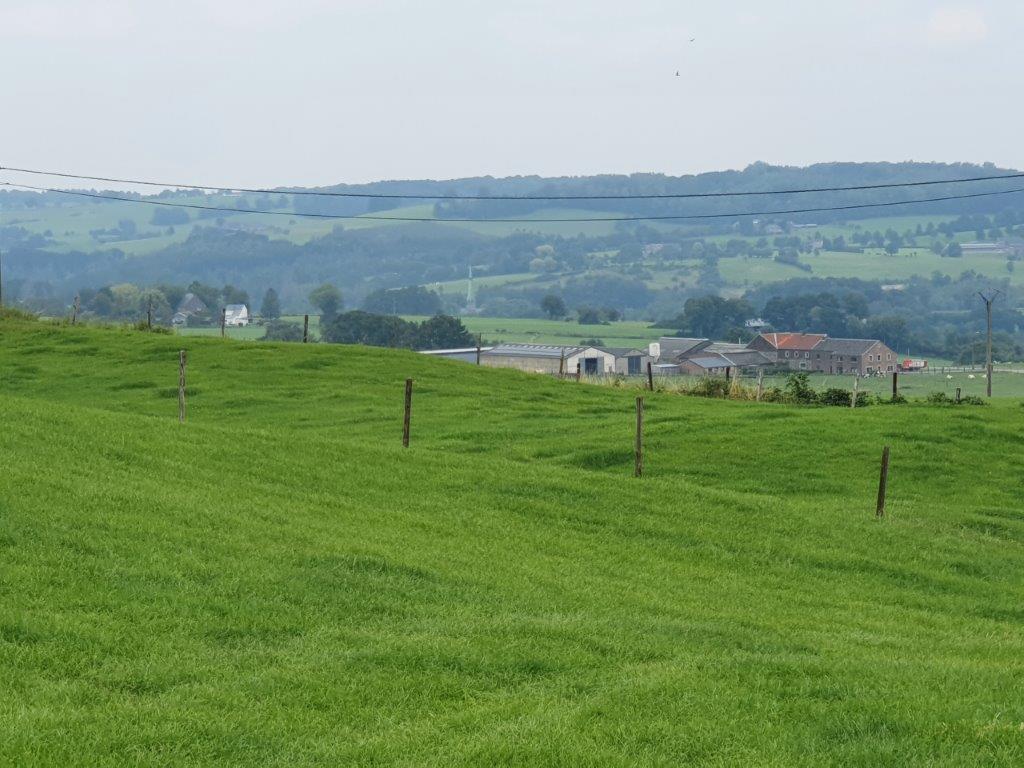 On the hill’s summit, a large cross was erected in 1913 (height 15m ; altitude 269m at the base),..
On the hill’s summit, a large cross was erected in 1913 (height 15m ; altitude 269m at the base),..
The Croix de Charneux (Dutch: Kruis van Charneux) is a cross on top of a hill near Charneux in the municipality of Herve in the Belgian province of Liège. The hill has an elevation of 269 meters above sea level and the top is about a kilometer north of the village, at the hamlet of “Bois del Fiesse”.
The name “Bois de la fête” possibly refers to the tradition that tournaments were organized here in the 13th century between the lords of Bolland, Xhéneumont and Charneux or between the lords of Luxembourg, Liège or Franchimont living further away.
The fifteen meter high cross on the top of the hill is made of concrete and was erected in 1913, at the initiative of the abbot of the Abbey of Godsdal and the parish priest of Charneux. The cross can be seen from miles around in the Land of Herve and the site offers a panoramic view of the region.
On the slope of the hill is observation post MN29 which was part of the Fort Battice observation belt. At this observation post a monument has been placed in honor of the fallen soldiers. This memorial commemorates the heroism of the soldiers in the post during the Nazi invasion of 1940, which withstood the German attacks of 10 and 17 May 1940. The observation post was manned by five men: three were killed and the other two, wounded in the fighting, were captured.
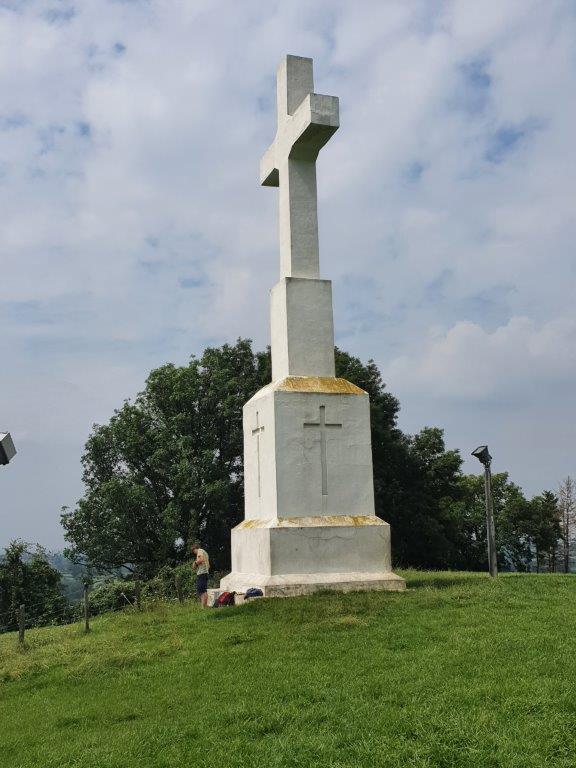 It dominates the whole region and gives an exceptional panoramic view. A perfect spot for a break where we could eat some sandwiches as the sun finally started to penetrate the clouds again. This was typical Herve country, which is a very biodiverse landscape, even more than Zuid-Limburg and De Voerstreek and much more than almost everywhere else in The Netherlands…
It dominates the whole region and gives an exceptional panoramic view. A perfect spot for a break where we could eat some sandwiches as the sun finally started to penetrate the clouds again. This was typical Herve country, which is a very biodiverse landscape, even more than Zuid-Limburg and De Voerstreek and much more than almost everywhere else in The Netherlands…
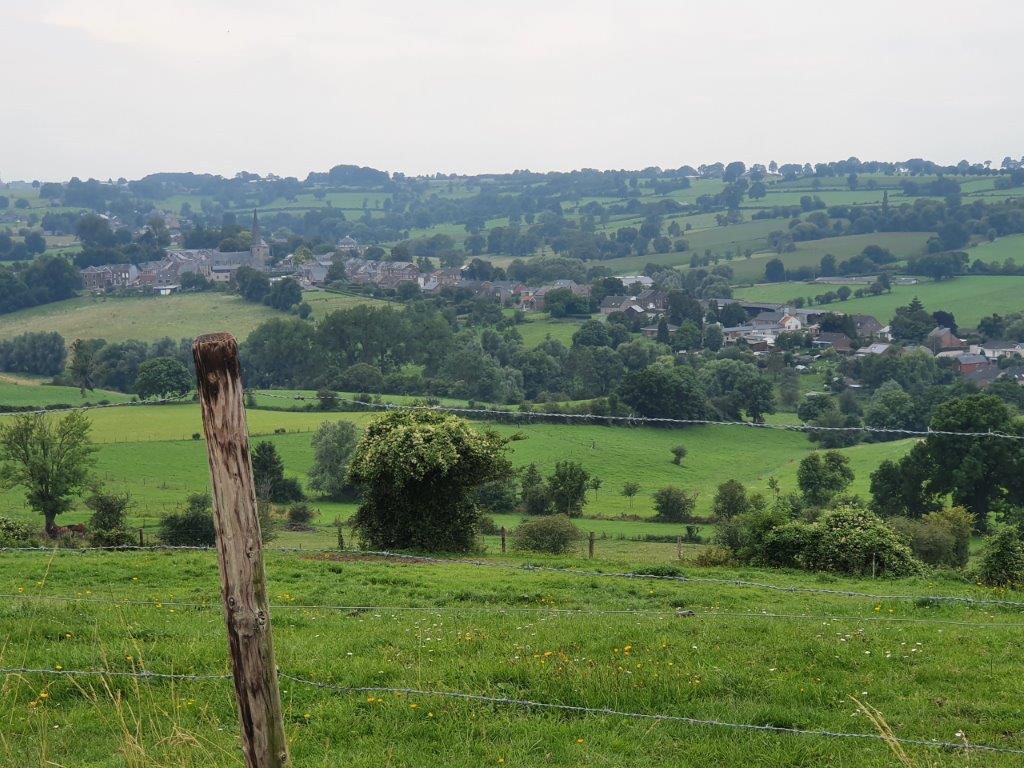 Beneath was a gorgeous view over the village of Charneux, which The Wandelgek had visited before in 2000, while doing a long distance hike from Eupen to Epen: Walk 2: Verviers – Battice – Herve – Charneux (20km)
Beneath was a gorgeous view over the village of Charneux, which The Wandelgek had visited before in 2000, while doing a long distance hike from Eupen to Epen: Walk 2: Verviers – Battice – Herve – Charneux (20km)
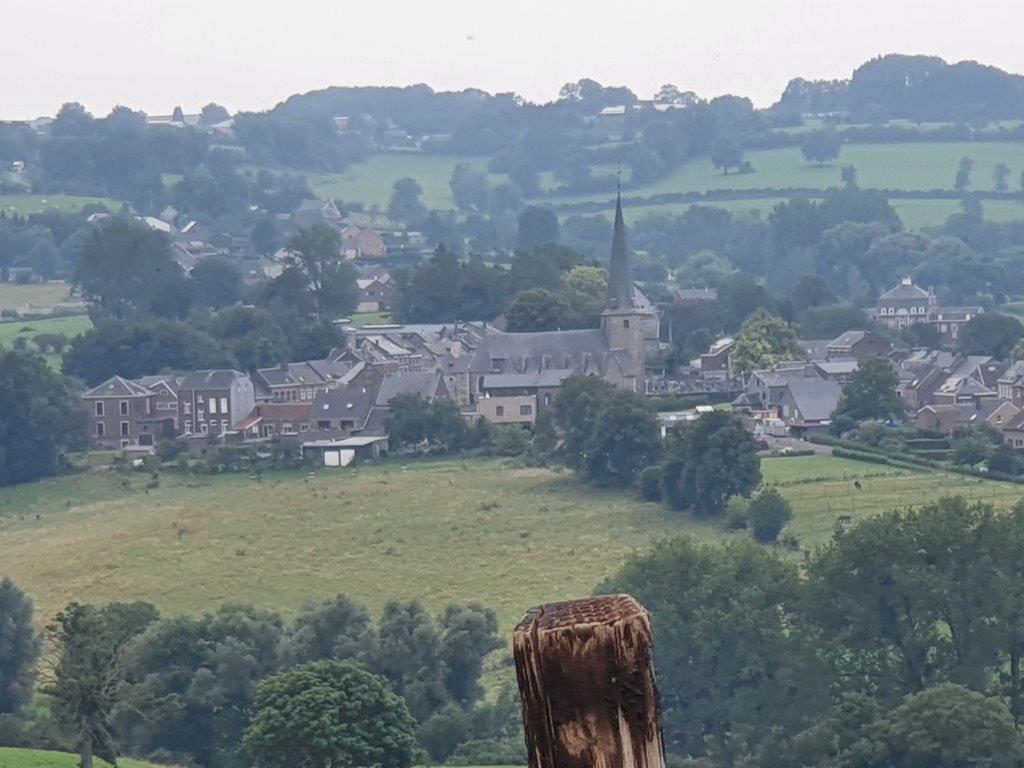 The view over this pastoral land was mesmerizing. This is how agriculture is meant to be.
The view over this pastoral land was mesmerizing. This is how agriculture is meant to be.
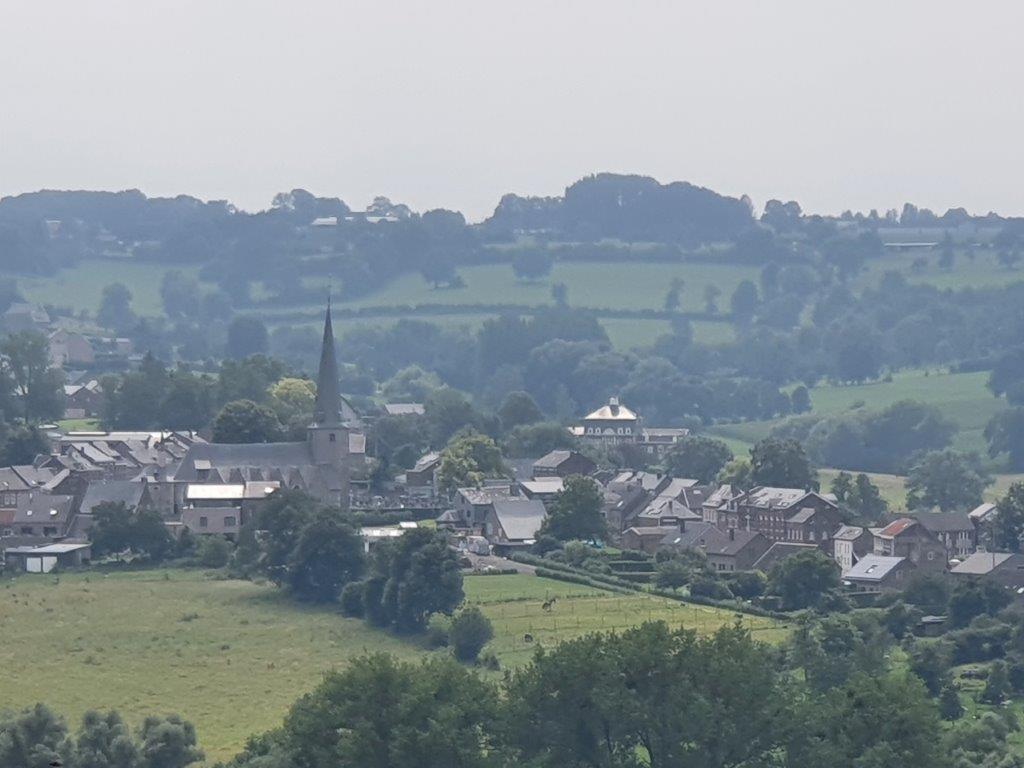 Everything looks green and there are loads of birds, insects, like butterflies, bees, bumblebees and wasps travelling from hedgerow to hedgerow…
Everything looks green and there are loads of birds, insects, like butterflies, bees, bumblebees and wasps travelling from hedgerow to hedgerow…
After sitting there for over an hour, absorbing the views like sponges, we descended and set course for the village of:
Charneux
Charneux is a village in the Belgian province of Liège, belonging to the municipality of Herve. In the village is the St-Sébastien church, and a triangular square.
History
Until the abolition of the Duchy of Limburg, Charneux belonged to the Limburg high bank of Herve. Like the rest of the duchy, Charneux was incorporated into the then formed Ourthe departement when the Southern Netherlands was annexed by the French Republic in 1795.
Nature and landscape
Charneux is located on the Plateau of Herve at an altitude of about 230 meters. Charneux has a rural environment. In the north, Charneux is bordered by the river Berwinne or Berwijn.
Charneux is located in a valley surrounded by hills and from those hills all sorts of dirt trails an paths descend towards the village. From these paths the views towards the village are quite awesome…
Grassy trails between meadows…
…and trails through a piece of woodland that are obviously serving as water exhausts too…
Then we arrived at Charneux, just like we did 21 years before, arriving from the opposite direction.
Saint Sebastian Church (Charneux)
Saint Sebastian ‘s Church (French: Église Saint-Sébastien ) is the parish church of the village of Charneux , belonging to the Belgian municipality of Herve , located on Petit Vinave .
History
There was already a chapel in Charneux around 1300, which was elevated to a parish church in 1380. In 1443 a choir was consecrated and in 1616 a new church was consecrated. In the first half of the 18th century, a sacristy was built as an extension of the choir . Church and tower are built in sandstone blocks and limestone.
The massive, square pre-built tower has hardly any window openings. He is covered by an octagonal striker. The entrance portal is 17th century.
The tower, the nave and the three-sided choir are from the 15th century. The bays of both aisles are closed with frontals . Here you will also find the chronogram : MaLe DICent bene fiat (1652).
Above the sacristy is an ornate turret.
The church is surrounded by a walled cemetery. The wall was rebuilt in 1844 and restored in 1957. It contains eighty-two rings to which the cattle used to be attached during the annual fair on Saint Catherine’s Day. In the cemetery you will find numerous grave crosses from the 16th, 17th and 18th centuries.
A bit further in tge village was this horse farm where they had trucks for horse transport…
… but what I specificly liked was this wonderfully crafted wooden horse statue…
We decided it was time to end our walk and go for a beer or two at the:
Abbaye de Val Dieu 1
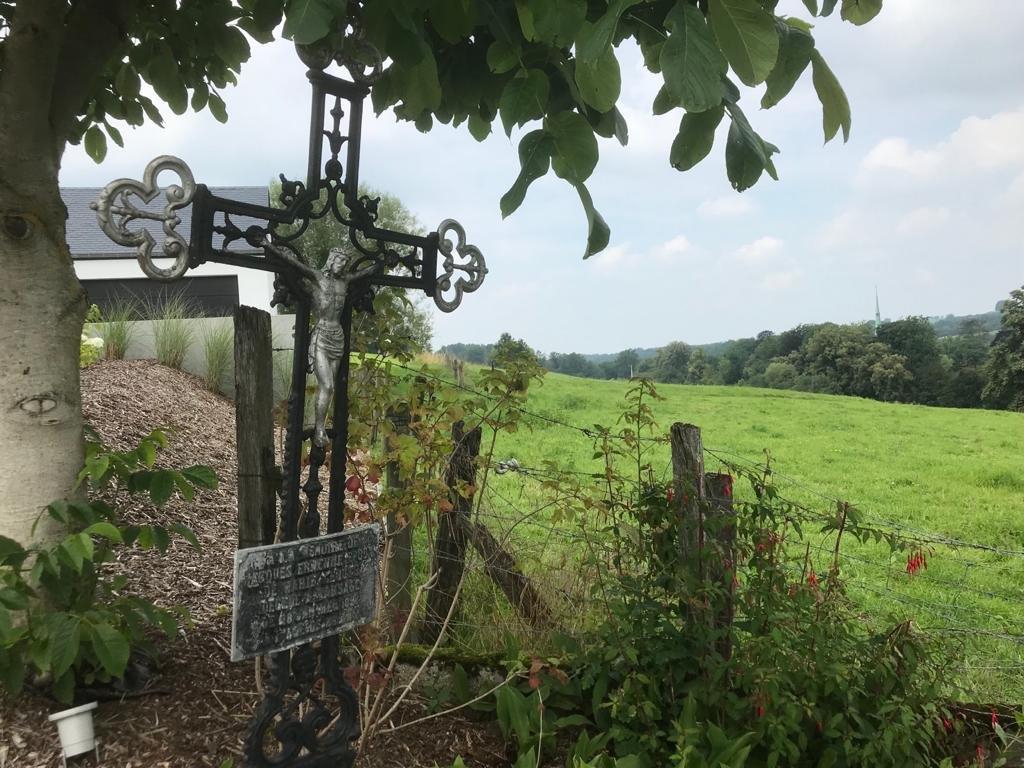 Val-Dieu Abbey is a former Cistercian monastery in Wallonia in the Berwinne valley near Aubel in the Land of Herve (province of Liège, Belgium).
Val-Dieu Abbey is a former Cistercian monastery in Wallonia in the Berwinne valley near Aubel in the Land of Herve (province of Liège, Belgium).
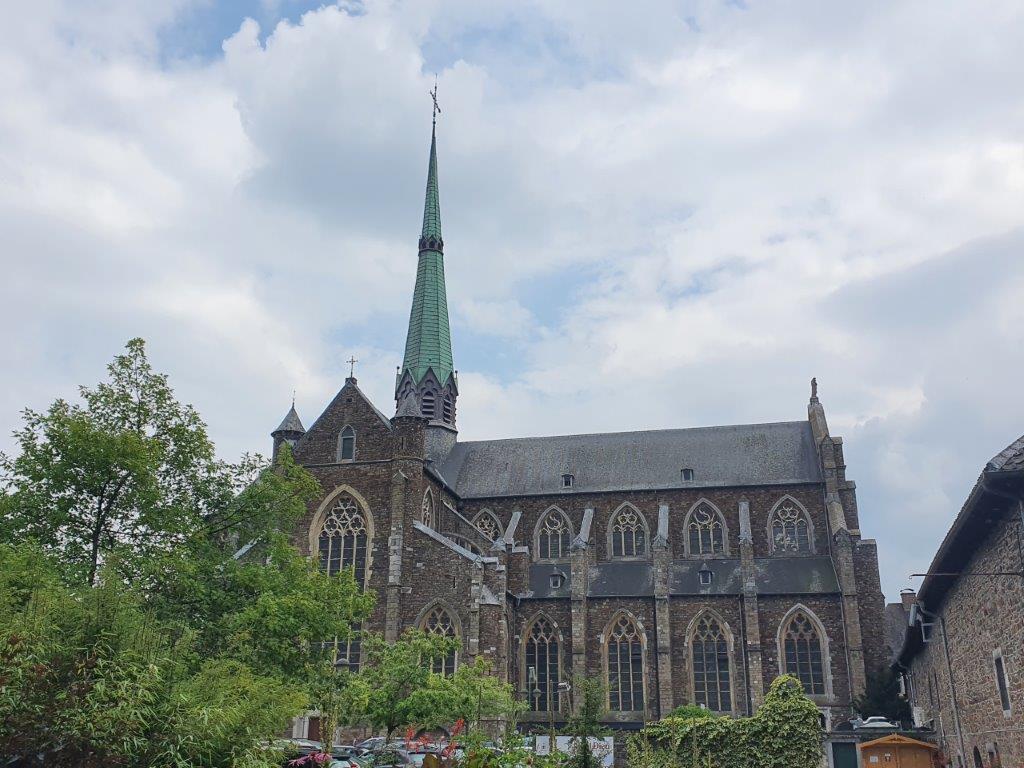 History
History
In 1216 a small number of monks from the Hocht part of Lanaken, near Maastricht, settled in the uninhabited valley which formed the border between the Duchy of Limburg and the county of Dalhem; they called their settlement Vallis Dei (French: Val-Dieu; English: Valley of God).
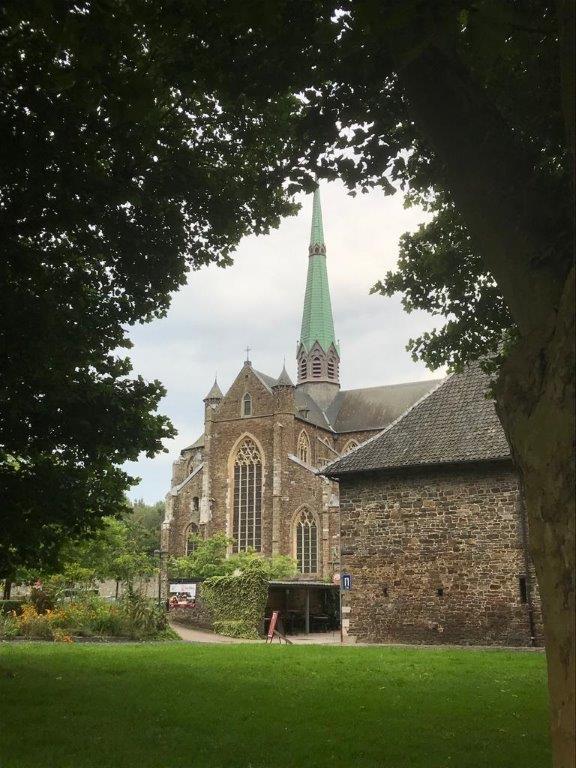 The abbey’s original church was destroyed in 1287 during the War of the Limburg Succession. The church was rebuilt, but was destroyed again in 1574 during the Eighty Years’ War, and in 1683 by the armies of Louis XIV. Under the jurisdiction of Abbot Jean Dubois, from 1711 until 1749, the abbey flourished. It was dissolved during the French Revolution, when the church was destroyed for the fourth time.
The abbey’s original church was destroyed in 1287 during the War of the Limburg Succession. The church was rebuilt, but was destroyed again in 1574 during the Eighty Years’ War, and in 1683 by the armies of Louis XIV. Under the jurisdiction of Abbot Jean Dubois, from 1711 until 1749, the abbey flourished. It was dissolved during the French Revolution, when the church was destroyed for the fourth time.
The remaining buildings were left empty until 1844, when they were resettled by the last living monk of Val-Dieu from the time before the Revolution, together with four monks from Bornem Abbey.
The abbey was closed again in 2001, when the last three monks left. Since 1 January 2002 a small lay community has lived there, under the leadership of rector Jean-Pierre Schenkelaars, overseen by the regional ecclesiastical authorities, in association with the Cistercian Order.
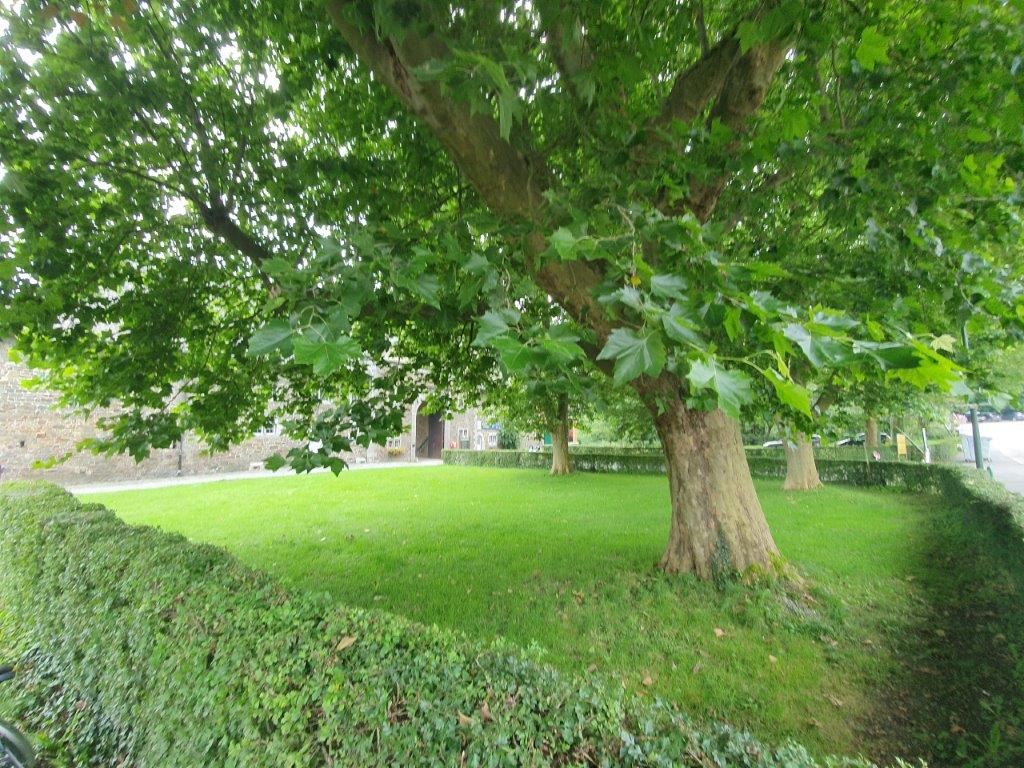 In the year 2000, The Wandelgek visited Herve Country and the Val-Dieu Abbey for the very 1st time. This was already his 4th visit after 2000, 2005 and 200? That 1st time was kinda special. In 2000 The Wandelgek had been on a multiple day long distance hike: Val-Dieu Abbey, wild camping and farm camping at nights. But at Val Dieu, he slept in a tent in one of the meadows in front of the Abbey gate, which was of course not allowed.
In the year 2000, The Wandelgek visited Herve Country and the Val-Dieu Abbey for the very 1st time. This was already his 4th visit after 2000, 2005 and 200? That 1st time was kinda special. In 2000 The Wandelgek had been on a multiple day long distance hike: Val-Dieu Abbey, wild camping and farm camping at nights. But at Val Dieu, he slept in a tent in one of the meadows in front of the Abbey gate, which was of course not allowed.
During that night a heavy thunderstorm past over the Abbey with lots of lightning. Everyone knows it’s not wise to sleep underneath a tree during lightning so in the middle of the night, The Wandelgek left his tent and found shelter from the rain , standing against the Abbey wall, having this view when looking up (except it was night of course):
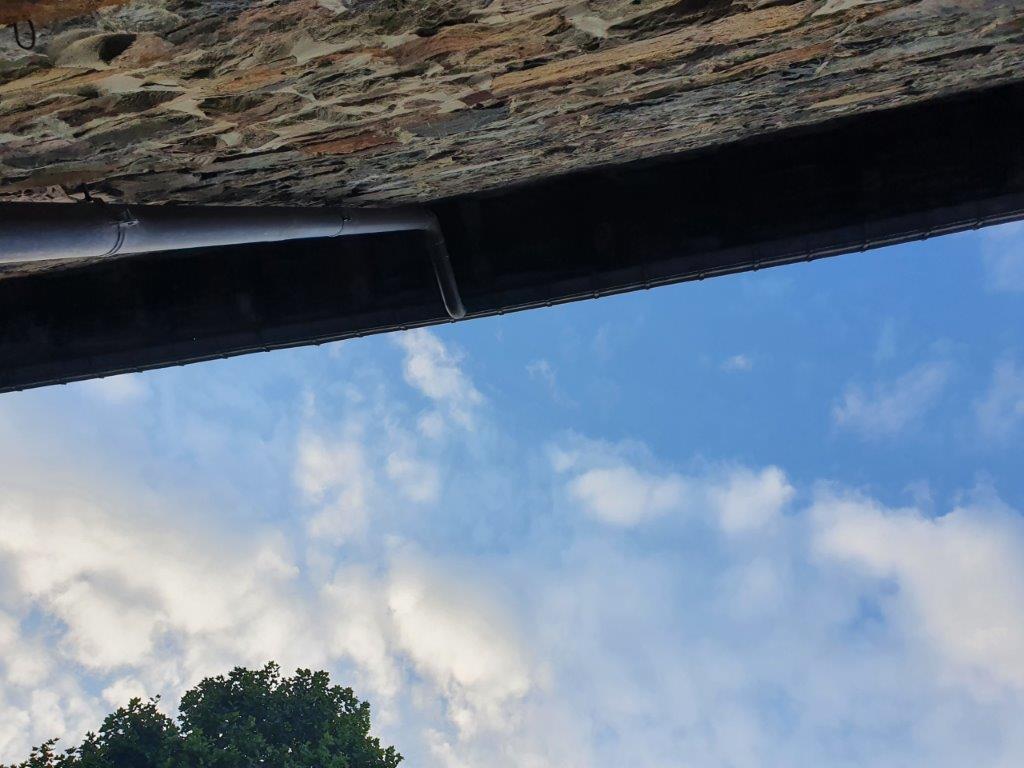 Not only is this a very beautiful abbey, it is also a beer brewing and cheese producing abbey 😀 , a paradise to long for at the end of a beautiful walk…
Not only is this a very beautiful abbey, it is also a beer brewing and cheese producing abbey 😀 , a paradise to long for at the end of a beautiful walk…
Brewery
In 1997 the Brasserie de l’Abbaye du Val-Dieu was established in the abbey farm, and brews a range of abbey beers in the tradition of the former Val-Dieu monks. Their range includes a Belgian blonde (6%), brune (8%), triple (9%), as well as a grand cru (10.5%).
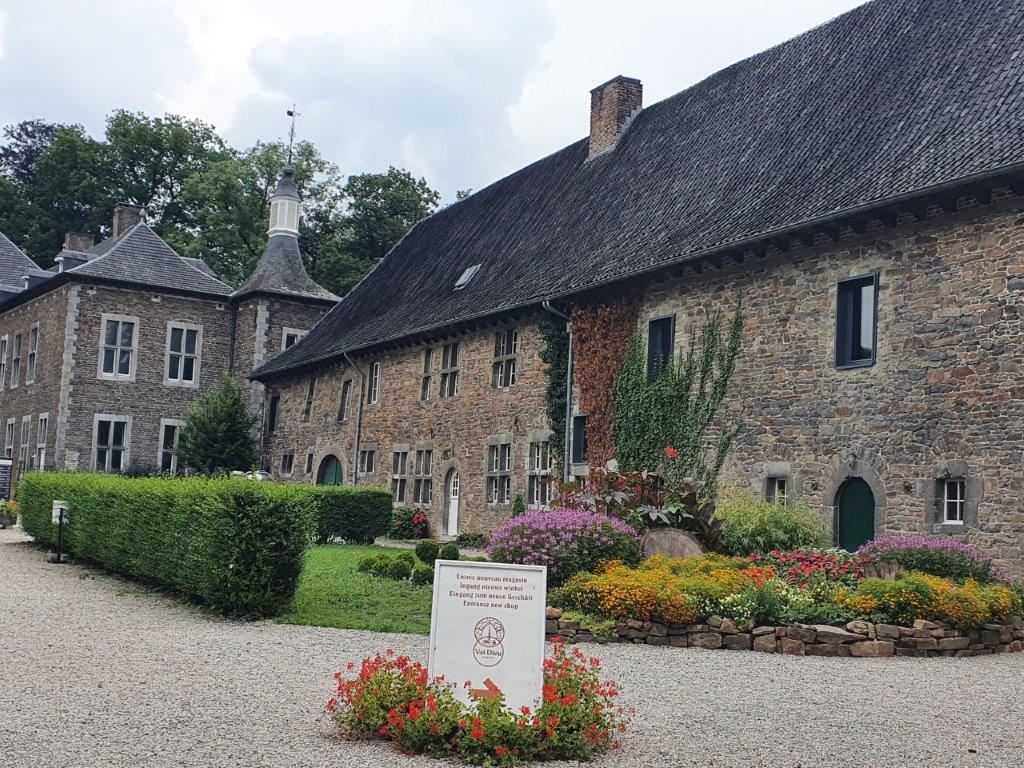 The Brasserie de l’Abbaye du Val-Dieu, is where you can enjoy the Val-Dieu beer, cheese and cider…
The Brasserie de l’Abbaye du Val-Dieu, is where you can enjoy the Val-Dieu beer, cheese and cider…
The Val-Dieu beer represents authenticity and quality, as it is the only abbey beer that, like the famous Trappist beers, is brewed 100% in the abbey itself.
The monks are the origin of the beer that is now brewed at the abbey. The Cistercienses were known for their talents as beer brewers. The monks of Val-Dieu have honored this talent. The development of the brewing activities was originally to make the water drinkable, thus preventing diseases such as cholera typhus and dysentery.
For many centuries the live yeasts and the fermentation process were studied. They have refined the production of the beer by developing special recipes. Today, Val-Dieu beers are inspired by the original recipes of the monks. The brewery is faithful to the tradition of nagisiting in the bottle. The beers are original Belgian abbey beers, without the addition of aromas or herbs and built according to the authentic infusion method.
The secrets of the brewery are the water and the yeast. The yeast is carefully stored and multiplied at the abbey. The brewer’s yeast contains microscopic fungi (Saccharomyces cerevisiae ) that are very beneficial to the human body and allow the so popular nagisiting (postponed or after yeasting), which often happens after the beer has been bottled.
The beer contains many B vitamins and minerals and contains a strong ant-oxidant. In respect of the old traditions, the production of the beer takes between 6 and 8 weeks. This gives rise to the different alcohol percentages (6% for the blond, 8% for the brown and 9% for the triple) and the complex aromas in Val-Dieu beer.
The water comes from the Gileppe reservoir. The region contains excellent natural resources. Some sources such as those of Spa, Bru and Chaudfontaine are known worldwide. These are situated 20-30 kilometers from Val-Dieu.
Hereby the 5 beers that are currently being brewn in Val-Dieu.
The Val-Dieu Blond 6° is a fresh and light beer, with a moderate alcohol content, and a strong friendly character. It is perfect as an aperitif or as a digestive. It can also be accompanied by a good meal. It does not dry the mouth and gradually develops a pleasant and bitter character. It is extremely pleasant to drink chilled. It retains a light white foam during the tasting.
The Val-Dieu Brown 8° is colored. The aroma is more pronounced, with a coffee/mocha character. The mocha taste will gradually disappear to make way for a roasted malt taste that is neither too neutral nor too strong. It is very slightly spicy which reminds that it is mainly a beer for tasting. At room temperature or refrigerated, it suits all conditions.
The Val-Dieu Triple 9° is the result of a long fermentation, closely followed by the brewmaster. The deep yet soft bitterness does not disturb the discovery of its components. The taste of the hops is emphatically present, it is naturally flavored and accompanied by an alcoholic aftertaste. It can be associated with refined dishes and belongs to the great beers. It is therefore on the menu in some of the most exclusive restaurants.
The Val-Dieu Grand Cru 10°
Dark colored, with a brownish and creamy foam. A rich beer, full and powerful with a delicious aftertaste. Complex scents but surprisingly soft considering its alcohol percentage. Prepared with heavily roasted malt it has a sour taste.
The Val Dieu Bière de Noël Christmas 7° (only available from December to January)
Val Dieu Kerst is amber colored and has a full foam head and a wonderful aroma. Full of character and easily digestible, it has a fine and balanced taste.
On top of this Val-Dieu also brews a red fruit beer and a barrel aged dark barleywine.
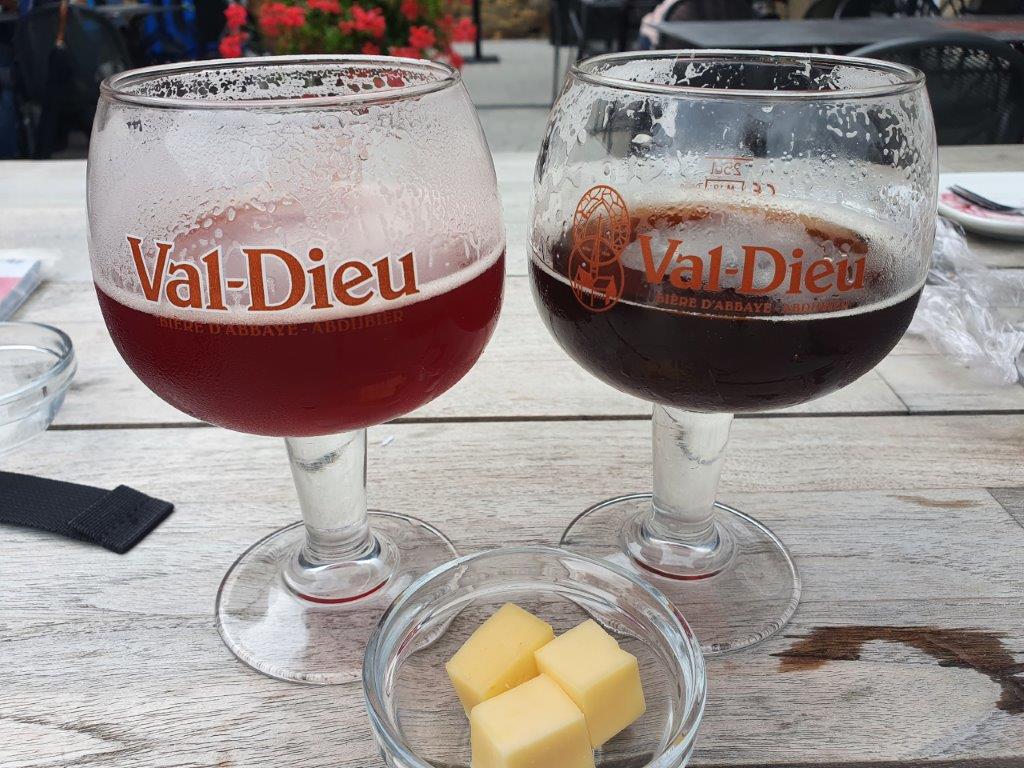 The Val-Dieu cheese is a typical local Stinkkaas (Smelly cheese) or Rommedoe.
The Val-Dieu cheese is a typical local Stinkkaas (Smelly cheese) or Rommedoe.
After a few beers and some cheese, we got hungry and walked towards restaurant:
Le Moulin du Val-Dieu
This restaurant is located in the buildings of the old mill that originally was the Mill of the Val Dieu Abbey.
Sitting in the restaurant, we had a view of the “machinery”, like e.g. the large gear wheels of the mill which is a water driven mill and is still intact and working…
Today, the Moulin du Val Dieu is a typical tavern – brasserie where one can also taste some fine cooking dishes, local specialities that are home-made, or drink a local beer or cider. It’s the best place to enjoy a good dessert and take in the surroundings of a typical local restaurant. (Saturday and Sunday evenings).
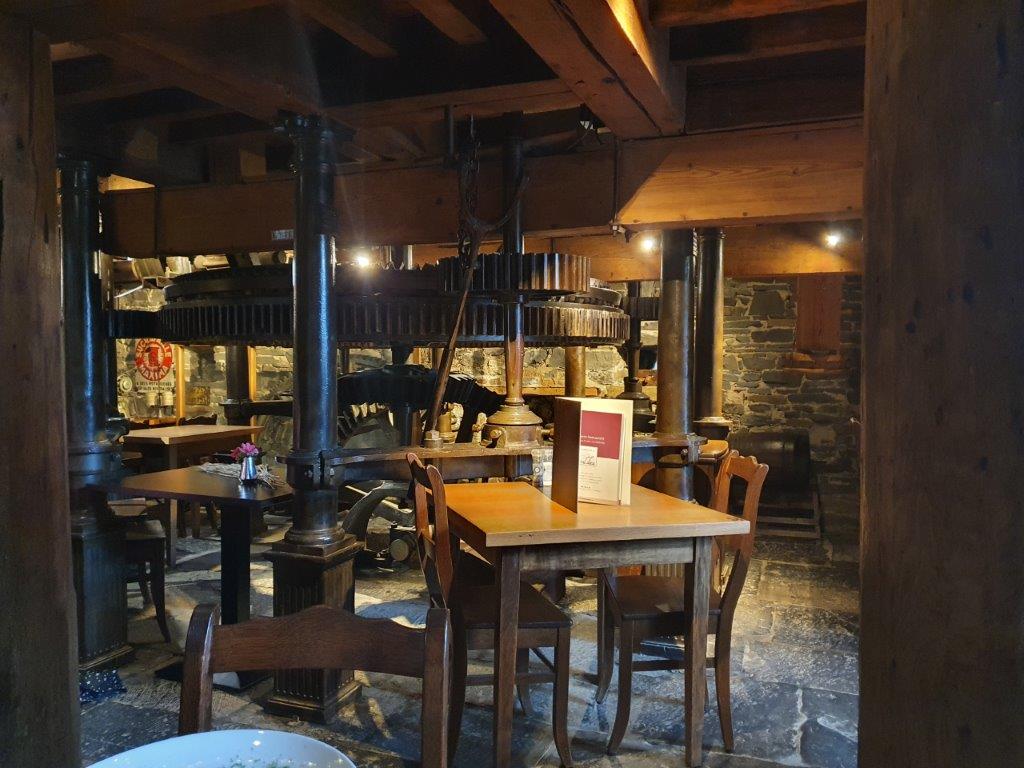 The Wandelgek started his dinner with a tray of assorted local cheeses and among those the Herve and Val-Dieu cheeses…
The Wandelgek started his dinner with a tray of assorted local cheeses and among those the Herve and Val-Dieu cheeses…
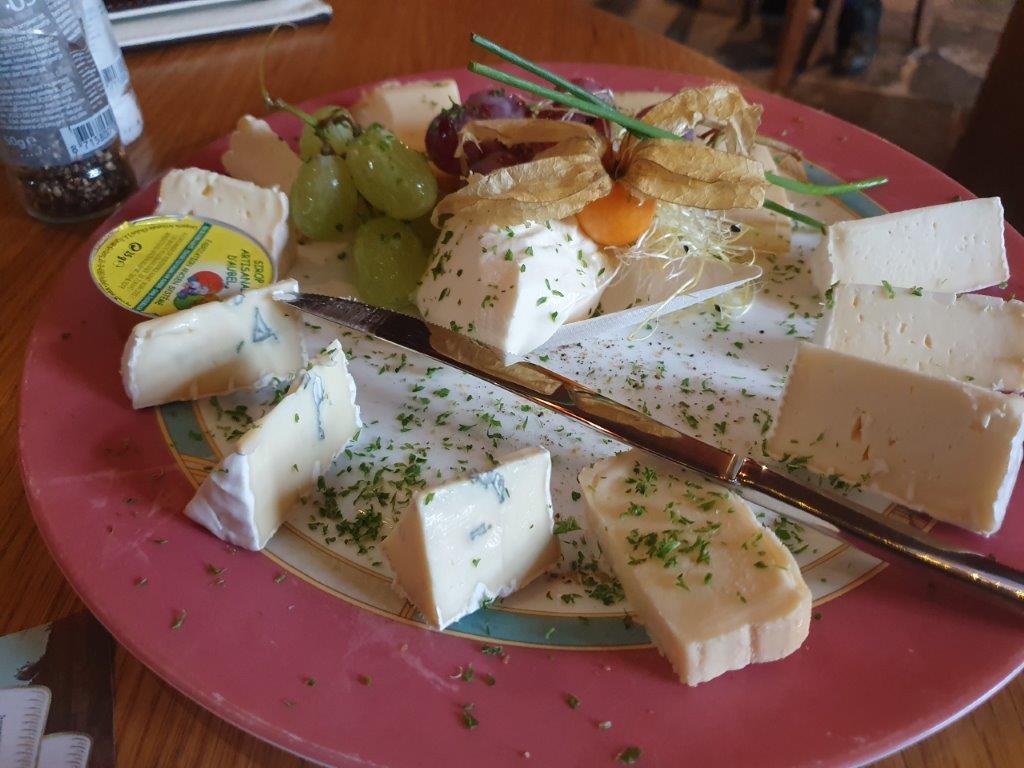 There is also a good selection of Val-Dieu beers available…
There is also a good selection of Val-Dieu beers available…
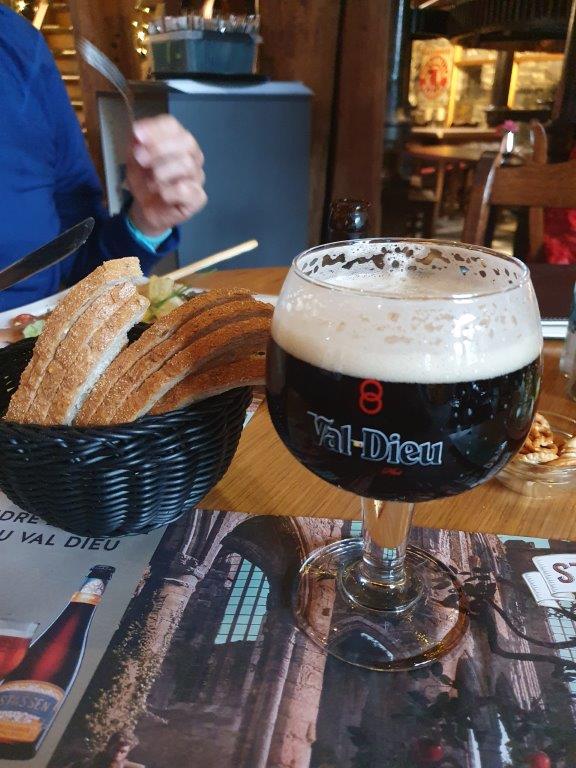 …and the dishes of the brasserie are delicious.
…and the dishes of the brasserie are delicious.
The Wandelgek has been several times at this restaurant and remembers fondly the 1st visit in 2000 when after the abbey closed, he visited the garden terrace of the Moulin for some cheese tasting and beer. It had been a very hot day. Afterwards he placed his tent in front of the abbey walls.
Abbaye de Val Dieu 2
The restaurant now closed its doors quite early at around 19.00 CET (this was due to corona) and we returned to the abbey…
We now walked towards and through the main gate of the Abbey.and set down on their terrace for a last beer, before returning to our studio..
Weather had been sooooo much better than the day before. There had even been some sun today.
After a last view upon the abbey…
…we left towards La Bushaye, soaking up the last views of this day in wonderfully rural Herve country…
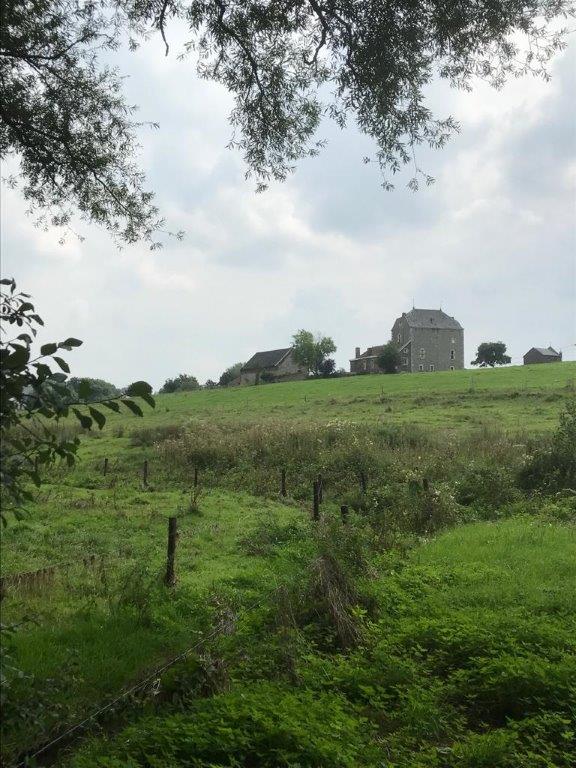 …where we sat in front of our tiny home and enjoyed the last beams of sun and light, before entering and going for an early night’s rest.
…where we sat in front of our tiny home and enjoyed the last beams of sun and light, before entering and going for an early night’s rest.
These holes were food for discussion. What were they? Swallow nest holes? The owner explained to us that they were simply drainage holes and air holes for ventilation, to keep the hay stored on the upper floor as dry as possible…
The next day was going to be another section of the Dutch Mountain Trail through the Voerstreek, and returning into The Netherlands again…

